Iconoclasm and Persecution of Hindus & Buddhists by Muslims
From the direct words and remains of Muslim rulers themselves
“Allah gave me the task of destroying wicked Hindu kafirs. At his command, I performed Jihad destroying places of Hindu kafirs. I raised standards of Islam everywhere and destroyed Kafirs by the use of the sword. I destroyed places of idol worship all over India.” - Mughal Emperor Akbar, ‘the tolerant one’
A temple at Chittogarh with its Shikhara cut off and replaced by a dome, a common symbol of Islamic victory.
It’s often surprising the amount of white-washing that is done by marxist and left historians on the topic of the Islamic invasions of South Asia.
The topic is usually marred with made-up claims, downplaying and denial of atrocities, along with blatant Hinduphobia.
An example of a made up claim may be the idea that Hindus destroyed Buddhist temples instead of Muslims- a claim, with no scriptural, textual or archaeological backing. Whereas in fact Muslims obviously did, and there is genuine reference by Muslim rulers in doing so. So much so, that some Muslim rulers fashioned themselves as Butshikan, destroyer of Buddha idols.
We came down on them like a flood,
We went out among their cities,
We tore down the idol-temples,
We shat on the Buddha's head!
-Maḥmūd al-Kashgari (11th century AD)
This enmity between Buddhism and Islam is even exemplified by the Buddhist Kalachakra Tantra, which calls Muhammad “a messenger of death and ignorance”, and envisions a golden age will arise after a Buddhist holy war with Islam.
Buddhism was thoroughly wiped out in Afghanistan by Islamic invaders and so was every major site of Buddhism in India as well. Buddhism also co-existed with Hinduism practically everywhere, as well as in SE Asia. Indian kings (as well as SE Asian kings) sponsored both religions together. Wherever there exists a dearth in Buddhist temples, equally there is a dearth of Hindu temples in India. That is because they were both destroyed at the same time by the same perpetrator.
Pictured: Kandariya Temple and Sanchi Stupa
One of the few and only remaining Hindu temples in Northern India, Khajuraho, exists in the same region (Bundelkhand) as one of the last remaining Buddhist stupas at Sanchi. Same can be said with Buddhist Stupas and Hindu temples in the state of Odisha, which remain together, or even in Nepal where they share the same complexes and squares. If Hindu rulers destroyed Buddhist temples then there should probably not be standing Buddhist temples alongside the few remaining Hindu temples in Northern India. Contemporary Tibetan sources even explicitly mention that Muslims were destroying Buddhist temples in the heartland of India.
Nalanda Mahavira, a Buddhist monastery that attracted visitors as far as China, destroyed in vain.
“Skilled image-makers abounded in every place wherever the Law of the Buddha flourished. In the regions that came under the influence of the mlecchas (Muslims) the art of image making declined.“
“So he [the Persian king] destroyed Magadha (Bihar) by the Turuska (Turk) army, ruined many temples and heavily damaged Sri Nalendra (Nalanda Monastery). Even the ordained monks fled away.”
“….the petty Turuska (Turk) rulers of Bhamgala (Punjab) and other places united, ran over the whole of Magadha (Bihar) and massacred many ordained monks in Odantapuri. They destroyed this and also Vikramaslla. The Persians at last built a fort on the ruins of the Odanta vihara.”
-Tarantha (16th century), Tibet
Clockwise; Somapura, Odantapuri, Sarnath, and Vikramshila. All 4 Buddhist sites were demolished by Muslims in the region of Magadha.
Nevertheless, Buddhist temples and remains in South Asia show signs of clear Islamic iconoclasm. With heads of statues smashed or breasts of female goddesses cut off.
Smashed heads of the Kanishka stupa in Afghanistan. One of the largest Buddhist temples at the time.
Some may say the decline of Buddhism in India is particular, as it almost thoroughly became extinct. Therefore it must have been declining before Islamic invasions. However, Islamic invaders targeted the Buddhist heartland in South Asia. That is, Magadha, Bengal, and Gandhara. These were where Buddhists scriptures, monks, temples, priests, and its patrons congregated most. Buddhism became ever more syncretized to the point of absolute assimilation into Hinduism following the Islamic invasions, as both religions lost patronage and were relegated to rural areas in the North.
Another example of left wing lies might be the idea that Muslims were motivated by something other than their religion such as mere conquest or wealth. This is silly, for the reason that Muslims are not the only foreigners to invade traditionally Hindu/Buddhist lands. Greeks, Scythians, and ancient Persians all invaded parts of South Asia and did not engage in iconoclasm or a persecution of religious beliefs, or jizya or religious centered slavery. In fact in some cases they even adopted Hinduism and Buddhism (Indo-Greeks, Kushans, Indo-Scythians) or just really left them alone while giving some patronage (Indo-Parthians, Sassanids, Achaemenids). Furthermore Islam itself is in strict opposition to polytheism and idolatry. Its one of its main thesis’s. The prophet Muhammad himself engaged in iconoclasm, and his own successor state- The Ummayads, invaded Hindu & Buddhist lands itself while engaging in iconoclasm. Besides all that, Islamic rulers and chroniclers repeatedly claimed to jihad against idol-worship and polytheism. Leftists refuse to take the word of Muslim rulers and invaders themselves, and instead MAKE UP their own version of historical narratives on what motivated these invaders. Even worse some absolutely deny these things even happened, genuinely putting their head in the sand. I guess the half-ruined temples with smashed idols just don’t exist in their eyes.
Ultimately what’s important is to look at history objectively. See what remains of it. See what people in the past actually said. And lastly be comparative about it.
So lets look at it objectively. What did contemporary Muslim invaders and writers actually say about Hindus? And what did they do to Hindu & Buddhist temples?
…….
From the early Caliphate (8th & 9th century):
They invaded or raided the regions of Sindh, Afghanistan, and Punjab.
•Muhammad Bin Qasim
“…..Mahomed Kasim levelled the temple and its walls with the ground and circumcised the brahmins. The infidels highly resented this treatment, by invectives against him and the true faith. On which Mahomed Kasim caused every brahmin, from the age of seventeen and upwards, to be put to death; the young women and children of both sexes were retained in bondage and the old women being released, were permitted to go whithersoever they chose... On reaching Mooltan, Mahomed Kasim also subdued that province; and himself occupying the city, he erected mosques on the site of the Hindu temples.”
“The town was thus taken by assault, and the carnage endured for three days. The governor of the town, appointed by Dãhir, fled and the priests of the temple were massacred. Muhammad marked a place for the Musalmans to dwell in, built a mosque, and left four thousand Musalmans to garrison the place…”
“Muhammad built at Nirun a mosque on the site of the temple of Buddha, and ordered prayers to be proclaimed in the Muhammadan fashion and appointed an Imam.”
“The way of granting pardon prescribed by law is that when you encounter the unbelievers, strike off their heads… make a great slaughter among them… (Those that survive) bind them in bonds… grant pardon to no one of the enemy and spare none of them”
•Khalifa Al-Mahdi
"In the year 159 (AD 776) Al Mahdi sent an army by sea under Abdul Malik bin Shahabu'l Musamma'i to India. They proceeded on their way and at length disembarked at Barada. When they reached the place they laid siege on it. The town was reduced to extremities and God prevailed over it in the same year. The people were forbidden to worship the Buddha, which the Muhammadans burned."
From the Saffarids and Samanids (9th & 10th century):
They invaded or raided parts of Afghanistan & Punjab.
•Yaqub bin Laith
"He took Bamian (Afghanistan), which he probably reached by way of Herat, and then marched on Balkh where he ruined (the temple) Naushad. On his way back from Balkh he attacked Kabul..." "Starting from Panjhir, the place he is known to have visited, he must have passed through the capital city of the Hindu Sahis to rob the sacred temple -- the reputed place of coronation of the Sahi rulers -- of its sculptural wealth..."
Sacked temples built by the Hindu Shahi. While not the ones in Kabul or Balkh, these Hindu temples shared similar fate.
•Jalam ibn Shaiban
"A famous idol of theirs was that of Multan (Punjab), dedicated to the sun, and therefore called Aditya. It was of wood and covered with red Cordovan leather; in its two eyes were two red rubies. It is said to have been made in the last Kritayuga.....When Muhammad Ibn Alkasim Ibn Almunaibh conquered Multan, he inquired how the town had become so very flourishing and so many treasures had there been accumulated, and then he found out that this idol was the cause, for there came pilgrims from all sides to visit it. Therefore he thought it best to have the idol where it was, but he hung a piece of cow's flesh on its neck by way of mockery. On the same place a mosque was built. When the Karmatians occupied Multan, JalamIbn Shaiban, the usurper, broke the idol into pieces and killed its priests..."
From the Ghaznivads (10th & 11th century):
They invaded modern day regions of Afghanistan and Pakistan while raiding deep into Northern India.
•Sultan Mahmud of Ghazni
"The Amir marched out towards Lamghan (Afghanistan), which is a city celebrated for its great strength and abounding wealth. He conquered it and set fire to the places in its vicinity which were inhabited by infidels, and demolishing idol temples, he established Islam in them. He marched and captured other cities and killed the polluted wretches, destroying the idolaters and gratifying the Musulmans."
The Ahin Posh Buddhist Stupa in the region of Lamghan, likely destroyed by Ghaznivads.
“whenever I am at leisure from the affairs of my kingdom I will spend most of my time in going to Hindustan and wage a Holy War.”
"After the Sultan had purified Hind from idolatry, and raised mosques therein, he determined to invade the capital of Hind to punish those who kept idols and would not acknowledge the unity of God...He marched with a large army in the year AH 404 (AD 1013) during a dark night..."
"A stone was found there in the temple of the great Buddha on which an inscription was written purporting that the temple had been founded 50,000 years ago. The Sultan was surprised at the ignorance of these people, because those who believe in the true faith represent that only seven hundred years have elapsed since the creation of the world, and the signs of resurrection are even now approaching. The Sultan asked his wise men the meaning of this inscription and they all concurred in saying that it was false, and no faith was to be put in the evidence of a stone."
Buddhist remains, Afghanistan.
"The chief of Tanesar was...obstinate in his infidelity and denial of God. So the Sultan marched against him with his valiant warriors, for the purpose of planting the standards of Islam and extirpating idolatry.."
"The city of Thanesar (Haryana) is highly venerated by Hindus. The idol of that place is called Cakrasvamin, i.e. the owner of the chakra (Vishnu), a weapon which we have already described. It is of bronze, and is nearly the size of a man. It is now lying in the hippodrome in Ghazna, together with the Lord of Somnath…..”
“…The blood of the infidels flowed so copiously [at the Indian city of Thanesar] that the stream was discoloured, notwithstanding its purity, and people were unable to drink it…the infidels deserted the fort and tried to cross the foaming river…but many of them were slain, taken or drowned… Nearly fifty thousand men were killed.”
No temples have survived in the state of Haryana or Punjab. The earliest attacks beginning with Ghazni.
“The linga he raised was the stone of Somnath (Gujarat), for soma means the moon and natan means master, so that the whole word means master of the moon. The image was destroyed by the Prince Mahmud, may God be merciful to him! --He ordered the upper part to be broken and the remainder to be transported to his residence, Ghaznin…”
Somnath temple suffered repeated attacks.
"The Sultan then departed from the environs of the city, in which was a temple of the Hindus. The name of this place was Mahartul Hind (Mathura, Uttar Pradesh)... On both sides of the city there were a thousand houses, to which idol temples were attached, all strengthened from top to bottom by rivets of iron, and all made of masonry work..." "In the middle of the city there was a temple larger and firmer than the rest, which can neither be described nor painted. The Sultan thus wrote respecting it: --'If any should wish to construct a building equal to this, he would not be able to do it without expending an 100,000,000 red dinars, and it would occupy 200 years even though the most experience and able workmen were employed'... The Sultan gave orders that all temples should be burnt with naptha and fire, and levelled with the ground."
"In Kanauj (Uttar Pradesh) there were nearly 10,000 temples, which the idolaters falsely and absurdly represented to have been founded by their ancestors two or three hundred thousand years ago...Many of the inhabitants of the place fled and were scattered abroad like so many wretched widows and orphans, from the fear which oppressed them, in consequence of witnessing the fate of their deaf and dumb idols. Many of them thus effected their escape, and those who did not fly were put to death."
Kakanmath Temple with its smashed and defaced idols, in the state of Uttar Pradesh.
A mosque on top of a large temple plinth in the state of Madhya Pradesh. The temple was completely destroyed.
•Sultãn Mas‘ûd III of Ghazni
“In his reign Hajib Toghantugeen, an officer of his government, proceeded in command of an army towards Hindoostan, and being appointed governor of Lahore, crossed the Ganges, and carried his conquests farther than any Mussulman had hitherto done, except the Emperor Mahmood. Like him he plundered many rich cities and temples of their wealth, and returned in triumph to Lahore, which now became in some measure the capital of the empire, for the Suljooks having deprived the house of Ghizny of most of its territory both in Eeran and Tooran, the royal family went to reside in India.”
“…He marched with his army to the fort of Sonipat, and the commandant of that fort, Daniãl Har by name, becoming aware of his approach, fled… the army of Islam, having captured that fort, pulled down all the temples and obtained an enormous quantity of booty.”
On Sultan Abu'l Muzaffar Ibrahim
"As power and the strength of a lion was bestowed upon Ibrahim by the Almighty, he made over to him the well-populated country of Hindustan and gave him 40,000 valiant horsemen to take the country, in which there were more than 1000 rais...The army of the king destroyed at one time a thousand temples of idols, which had each been built for more than a thousand years. How can I describe the victories of the King..."
"The narrative of any battles eclipses the stories of Rustam and Isfandiyar... By morning meal, not one soldier, not one Brahmin remained unkilled or uncaptured. Their heads were levelled with the ground with flaming fire… Thou has secured the victory to the country and to religion, for amongst the Hindus this achievement will be remembered till the day of resurrection."
"…On this journey, the army destroyed a thousand idol-temples and thy elephants trampled over more than a hundred strongholds. Thou didst march thy army to Ujjain… The lip of infidelity became dry through fear of thee, the eye of plural-worship became blind..."
On the Delhi Sultanate (11th to 16th century:
The early Ghurids/Mamluks invaded Northern India. With the Khiljis & Tughlaqs, much of India was conquered and later split into various Sultans following its collapse.
•Muhammad Ghur & Qutb ud-Din Aibak
"He destroyed the pillars and foundations of the idol temples and built in their stead mosques and colleges, and the precepts of Islam, and the customs of the law were divulged and established. .."
"Kutub-d din marched from Kohran and when he arrived at Meerut (Uttar Pradesh) which is one of the celebrated forts of the country of Hind, for the strength of its foundations and superstructure, and its ditch, which was as broad as the ocean and fathomless- an army joined him, sent by the dependent chiefs of the country. The fort was captured, and a Kotwal was appointed to take up his station in the fort, and all the idol temples were converted into mosques."
"The Government of the fort of Kohram and Samana (Punjab) were made over by the Sultan to Kutuu-din. He purged by his sword the land of Hind from the filth of infidelity and vice, and freed it from the thorn of God-plurality, and the impurity of idol-worship and by his royal vigor and intrepidity, left not one temple standing..."
"He then marched and encamped under the fort of Delhi...The city and its vicinity were freed from idols and idol-worship, and in the sanctuaries of the images of the Gods, nosques were raised by the worshippers of one God. Kutub-d din built the Jami Masjid at Delhi and adorned it with stones and gold obtained from the temples which had been demolished by the elephants, and covered it with inscriptions in Toghra, containing the divine commands."
•Iltutmish
"In AH 631 he invaded Malwah (Madhya Pradesh), and after suppressing the rebels of that place, he destroyed that idol-temple which had existed there for the past three hundred years. Next he turned towards Ujjain and conquered it, and after demolishing the idol-temple of Mahakal, he uprooted the statue of Bikramajit together with all other statues and images which were placed on pedestals, and brought them to the capital where they were laid before the Jami Masjid for being trodden under foot by the people”
A collage of smashed idols and destroyed temples in India.
"From that place (Asni) the royal army proceeded towards Benares (Uttar Pradesh) which is the center of the country of Hind and here they destroyed nearly 1000 temples, and raised mosques on their foundations and the knowledge of the law became promulgated, and the foundations of religion were established. ."
"There was a certain tribe in the neighbourhood of Kol which had occasioned much trouble. Three bastions were raised as high as heaven with their heads, and their carcasses became the food of beasts of prey. That tract was freed from idols and idol-worship and the foundation of infidelity were destroyed."
"When Kutub-d din heard of Sultan's march from Ghazna, he was much rejoiced and advanced as far as Hansi to meet him. In the year AH 592 (AD 1196), they marched towards Thangar (Rajasthan), and the center of idolatry and perdition became the abode of glory and splendour.."
"In the year AH 599 (Ad 1202), Kutub-d din proceeded to the investment Kalinjar (Uttar Pradesh), on which expedition he was accompanied by the Sahib-Kiran, Shamsu-d din Altmash... The temples were converted into mosques and abodes of goodness, and the ejaculations of bead counters and voices of summoners to prayer ascended to high heaven, and the very name of idolatry was annihilated. ."
“The Sultan then returned from Jalor to Delhi..and after his arrival 'not a vestige or name remained of idol temples which had raised their heads on high; and the light of faith shone out from the darkness of infidelity.. and the moon of religion and the state became resplendent from the heaven of prosperity and glory."
•Sultan Jalalud-Din Mankbarni
"The Sultan then went towards Dewal and Darbela and Jaisi... The Sultan raised Masjid at Dewal, on the spot where an idol temple stood."
•Muhammad Bin Tughlaq
“The Sultan is not slack in Jihad. He never lets go of his spear or bridle in pursuing jihad by land and sea routes. This is his main occupation which engages his eyes and ears. Five temples have been destroyed and the images and idols of “Buddha” have been broken, and the lands have been freed from those who were not included in the daru'l Islam that is, those who had refused to become zimmis. Thereafter he got mosques and places of worship erected, and music replaced by call to prayers to Allah... The Sultan who is ruling at present has achieved that which had not been achieved so far by any king. He has achieved victory, supremacy, conquest of countries, destruction of the infidels, and exposure of magicians. He has destroyed idols by which the people of Hindustan were deceived in vain..."
Mahabodhi temple with its beheaded statues. This temple was the capital of Buddhist culture, as it was the site of the Buddha’s enlightenment. It received great patronage by the Guptas but fell into ruin after being sacked by Muslims.
"The Sultan never ceases to show the greatest zeal in making wars upon the infidel....Every day thousands of slaves are sold at a very low price, so great is the number of prisoners."
"Women with babies & pregnant ladies were haltered, manacled, fettered & enchained, & pressed as slaves into service in the house of every soldier"
"nearly 100,000 men of Jajnagar had taken refuge with their women, children, kinsmen & relations. the island into a basin of blood by the massacre of the unbelievers"
Kesariya Stupa with its beheaded Buddhas, in Bihar.
"Near the eastern gate of the mosque, lie two very big (Hindu) idols of copper connected together by stones. Every one who comes in and goes out of the mosque treads over them. On the site of this mosque was a bud Khana that is an idol-house. After the conquest of Delhi, it was turned into a mosque..."
•Tughlaq rulers of the Delhi Sultanate
“It is reported that inside the Rai's fort (Odisha), there was a stone idol which the infidels called Jagannath, and to which they paid their devotions. Sultan Firoz, in emulation of Mahmud Subuktign, having rooted up the idol, carried it away to Delhi where he placed it in an ignominious position."
While the temple at Puri was rebuilt during the British Raj, Konark Temple remains in its sorry state. The Shikhara of the temple is completely gone.
"..Sultan Muhammed Shah bin Tughlaq and Sultan Firuz Shah Tughlaq were sovereigns especially chosen by Almighty from among the faithful, and in their whole course of their reigns, wherever they took an idol temple they broke and destroyed it."
Here we see the punishment for a Brahmin publicly practicing a ritual in the city of Delhi:
“the Brahmin must either become a Musalman or be burned. The true faith was declared to the Brahmin, and the right course pointed out, but he refused to accept it. Orders were given for raising a pile of sticks before the door of the darbar (court). The Brahmin was tied hand and foot and cast into it; his tablet was thrown on top and the pile was lighted.”
"The next matter which by God's help I accomplished, was the repetition of names and titles of former sovereigns which had been omitted from the prayers of Sabbaths and Feasts. The names of those sovereigns of Islam, under whose happy fortune and favour infidel countries had been conquered, whose banners had waved over many a land, under whom idol-temples had been demolished, and mosques and pulpits built and exalted..."
“In the vilalge of Maluh, there is a tank which they call kund. Here they had built idol-temples and on certain days the Hindus were accustomed to proceed thither on horseback, and wearing arms. Their women and children also went out in palankins and carts. Then they assembled in thousands and performed idol-worship. ...when intelligence of this came to my ears my religious feelings prompted me at once to put a stop to this scandal and offence to the religion of Islam. On the day of the assembly I went there in person and I ordered that the leaders of these people and the promoters of this abominations should be put to death. I destroyed their idol-temples and instead thereof raised mosques."
A collage of more destroyed temples across North India
Here the idea that Hindus can practice their religion freely as long as they pay Jizya, is clearly proven to be false:
"The Hindus and idol-worshippers had agreed to pay the money for toleration (zar-i zimmiya) and had consented to the poll-tax(jiziya) in return for which they and their families enjoyed security. These people now erected new idol-temples in the city and the enviorns in opposition to the law of the Prophet which declares that such temples are not to be tolerated. Under divine guidance I destroyed these edifices and I killed those leaders of infidelity who seduced others into error, and the lower orders I subjected to stripes and chastisement, until this abuse was entirely abolished.”
"Some Hindus had erected a new idol-temple in the village of Kohana and the idolators used to assemble there and perform their idolatrous rites. These people were seized and brought before me. I ordered that the perverse conduct of the leaders of this wickedness should be publicly proclaimed, and that they should be put to death before the gate of the palace. I also ordered that the infidel books, the idols and the vessels used in their worship, which had been taken with idols, should all be publicly burnt. The others were restrained by threats and punishments, as a warning to all men, that no zimmi (one who pays Jizya) could follow such wicked practices in a Muslaman country."
"In the meanwhile Delhi received news of the defeat of the armies of Islam which were with Malikzada Mahmud bin Firuz Khan...This Malikzada reached the bank of the Yamuna via Shahpur and renamed Kalpi which was the abode and center of the infidels and the wicked, as Muhammadabad, after the name of Prophet Muhammed. He got mosques erected for the worship of Allah in places occupied by temples, and made that city his capital. "
“The Sultan moved with the armies of Islam towards Prayag and Arail with the aim of destroying the infidels, and he laid waste both those places. The vast crowd which had collected at Prayag for worshipping false gods was made captive. The inhabitants of Kara were freed from the mischief of rebels on account of this aid from King and the name of this king of Islam became famous by this reason."
A collage of more destroyed Hindu temples and smashed idols.
•Aluaddin Khilji
The Persian historian, Wassaf, writes in his book ‘Tazjiyat-ul-Amsar wa Tajriyat-ul-Asar’ that Alauddin Khilji once asked his spiritual advisor as to what Islamic law was prescribed for the Hindus. The Qazi replied “Hindus are like mud; if silver is demanded from them, they must, with the greatest humility, offer gold. If a Muslim desires to spit into a Hindu’s mouth, the Hindu should open it wide for the purpose. God created the Hindus to be slaves of the Mohammedans. The Prophet hath ordained that if the Hindus do not accept Islam, they should be imprisoned, tortured, and finally put to death, and their property confiscated.".
“…In the second year after this arrangement Muhammad Bakhtyar brought an army from Behar towards Lakhnauti and arrived at the town of Nudiya, with a small force; Nudiya is now in ruins. Rai Lakhmia (Lakhminia) the governor of that town… fled thence to Kamran, and property and booty beyond computation fell into the hands of the Muslims, and Muhammad Bakhtyar having destroyed the places of worship and idol temples of the infidels founded Mosques and Monasteries and schools and caused a metropolis to be built called by his own name, which now has the name of Gaur….
…..There where was heard beforeThe clamour and uproar of the heathen, Now there is heard resounding, The shout of ‘Allaho Akbar’.“
“Streams of blood sank into the ground. So far as the human eye could see, the ground was muddy with blood. The Hindus tried to fly away from the blood-eating earth, yet with eyes full of tears many of them sank in the mire.”
“He has to conquer the fort of Mandu by closing up the streams and making breaches in the walls; and when, by the kindness of the “Opener of the Gates”, the place has been conquered, he has to wash away, with the sharpness of his sword, the contamination of infidelity, which sticks to that pagan land as evil intentions stick to the eyes of the rebellious.”
“On that day of battle, from the appearance of the false dawn to the last flicker of light the infidels were slain and streams of blood were made to flow.”
•Later Khilji Rulers
"They pursued the enemy to the gates and set everything on fire. They burnt down all those gardens and groves. That paradise of idol-worshippers became like hell. The fire-worshippers of ‘Bud’(Buddha) were in alarm and flocked round their idols…"
“..Because of his Sword, instead of idols and temples in the land of unbelief now there are mosques, mihrab and mimbar. In the land where there were the sayings of the idol-worshippers, there is the sound of 'Allahu Akbar'...The descendants of those who were converted to Islam in this land will live until Day of Judgement; so too will those who bring others into the fold of Islam by the sword of Islam. Until the Day of Judgment these converts will be in debt of Shaykh al-Islam Mu'in al-din Hasam Sijzi..."
On Sikander Butshikan:
“Immediately after his (Sufi Mir Mohammad's) arrival, Sultan Sikandar, peace be on him, submitted to his supremacy and proved his loyalty to him by translating his words into deeds. He eradicated aberrant practices and infidelity (polytheism). He also put an end to the various forbidden and unlawful practices throughout his kingdom. Thus during the entire period of his rule, all traces of wines and intoxicants and instruments of vice and corruption, like the cord of canticle, lyre and tamborin were wiped out. The clamour of the drum and the trumpet, the shrill notes of the fife and the clarion no longer reached people's ears, except in battles and assaults.”
Muslims such as Sikander contributed heavily to Indian arts, for example, by banning music or destroying statues and temples. Hindus could never achieve such levels of sophistication on their own.
"Hindus were forcibly converted to Islam and were massacred in case they refused to be converted'," writes Hasan, a Muslim chronicler. He further observes, "And Sikandarpora (a city laid out by Sultan Sikandar) was laid out on the debris of the destroyed temples of the Hindus. In the neighbourhood of the royal palaces in Sikandarpora, the Sultan destroyed the temples of Maha-Shri built by Praversena and another by Tarapida. The material from these was used for constructing a 'Jami' mosque in the middle of the city."
"Towards the end of his life, he (Sultan Sikandar) was infused with a zeal for demolishing idol-houses, destroying the temples and idols of the infidels. He destroyed the massive temple at Beejbehara. He had designs to destroy all the temples and put an end to the entire community of infidels,"
Martand Sun Temple, Kashmir. The temple was destroyed by Sikander.
On Tamerlane:
"My principal object in coming to Hindustan... has been to accomplish two things. The first was to war with the infidels, the enemies of the Mohammadan religion; and by this religious warfare to acquire some claim to reward in the life to come. The other was... that the army of Islam might gain something by plundering the wealth and valuables of the infidels: plunder in war is as lawful as their mothers’ milk to Musalmans who war for their faith.”
Bengal Sultanate:
“The firm Muhammadan religion and the enlightened laws of Islam were introduced into that country. Before this, the Musalman Sovereigns exercised no authority over this country. Of the miracles of Kalapahar, one was this, that wherever in that country, the sound of his drum reached, the hands and the feet, the ears and the noses of the idols, worshipped by the Hindus, fell off their stone-figures, so that even now stone-idols, with hands and feet broken, and noses and ears cut off, are lying at several places in that country”
Isana Nagara, a contemporary Hindu writer, describes the condition of the Hindus under Husain Shah (of the Bengal Sultanate) as follows: “The wicked mlechchhas (Muslims) pollute the religion of the Hindus every day. They break the images of the gods into pieces and throw away the articles of worship. They throw into fire Srimad- Bhagavat and other holy scriptures, forcibly take away the conch-shell and bell of the Brahmanas (two necessary articles of worship), and lick the sandal paints on their bodies. They urinate like dogs on the sacred Tulasi plant, and deliberately pass faeces in the Hindu temples. They throw water from their mouths on the Hindus engaged in worship, and harass the Hindu saints as if they were so many lunatics let large.’’
Gujarat Sultanate:
“Ahmud Shah having a great curiosity to see the hill-fort of Girnal pursued the rebel in that direction… After a short time, the Raja, having consented to pay an annual tribute, made a large offering on the spot. Ahmud Shah left officers to collect the stipulated amount, and returned to Ahmadabad; on the road to which place he destroyed the temple of Somapoor, wherein were found many valuable jewels, and other property.”
“In the year AH 817 (AD 1414), Mullik Tohfa, one of the Officers of the King’s government was ennobled by the title of Taj-ool-Moolk, and received a special commission to destroy all idolatrous temples, and establish the Mahomedan authority throughout Guzerat; a duty which he executed with such diligence, that the names of Mawass and Girass were hereafter unheard of in the whole kingdom.”
“In the year AH 819 (AD 1416), Ahmud Shah marched against Nagoor, on the road to which place he plundered the country, and destroyed the temples…”
“In the year 817, eight hundred and seventeen Hijri, he resolved to march with intent of jihad against the unbelievers of Girnar, a famous fort in Sorath. Raja Mandalik fought with him but was defeated and took refuge in the fort. It is narrated that even though that land (region) this time did not get complete brightness form the lamp of Islam, yet the Sultan subdued the fort of Junagadh situated near the foot of Girnar mountain. Most of the Zamindars of Sorath became submissive and obedient to him and agreed to pay tribute. After that, he demolished the temple of Sayyedpur in the month of Jamadi I of the year 818, eight hundred and eighteen Hijri… In the year 823, eight hundred and twenty-three Hijri, he attended to the establishment of administrative control over his dominion. He suppressed refractoriness wherever it was found. He demolished temples and constructed masjids in their places…”
“Sultãn Ahmad… encamped near Chãmpãner on 7 Rabî-us-Sãni, AH 822 (AD 3 May, 1419). He destroyed temples wherever he found them and returned to Ahmadãbãd.”
On Deccan/Bahmani Sultans:
“The King having gone to view the fort, broke down an idolatrous temple, and killed some bramins, who officiated at it, with his own hands, as a point of religion. He then gave orders for a mosque to be erected on the foundation of the temple, and ascending a pulpit, repeated a few prayers, distributed alms, and commanded the Khootba to be read in his name. Khwaja Mahmood Gawan now represented, that as his Majesty had slain some infidels with his own hands, he might fairly assume the title of Ghazy, an appellation of which he was very proud. Mahmood Shah was the first of his race who had slain a bramin…”
“Mujahid Shah, on this occasion, repaired mosques which had been built by the officers of Allaudin Khilji. He broke down many temples of the idolaters, and laid waste the country; after which he hastened to Vijayanagar… The King drove them before him, and gained the bank of a piece of water, which alone divided him from the citadel, where in the Ray resided. Near this spot was an eminence, on which stood a temple, covered with plates of gold and silver, set with jewels: it was much venerated by the Hindus, and called, in the language of the country, Puttuk. The King, considering its destruction a religious obligation ascended the hill, and having razed the edifice, became possessed of the precious metals and jewels therein.”
“Ahmud Shah, without waiting to besiege the Hindu capital, overran the open country; and wherever he went put to death men, women, and children, without mercy, contrary to the compact made between his uncle and predecessor, Mahomed Shah, and the Rais of Vijayanagar. Whenever the number of slain amounted to twenty thousand, he halted three days, and made a festival celebration of the bloody event. He broke down, also, the idolatrous temples, and destroyed the colleges of the bramins. During these operations, a body of five thousand Hindus, urged by desperation at the destruction of their religious buildings, and at the insults offered to their deities, united in taking an oath to sacrifice their lives in an attempt to kill the King, as the author of all their sufferings…”
“In the year AH 829 (AD 1425), Ahmud Shah marched to reduce a rebellious zemindar of Mahoor… During this campaign, the King obtained possession of a diamond mine at Kullum, a place dependent on Gondwana, in which territory he razed many idolatrous temples, and erecting mosques on their sites, appropriated to each some tracts of land to maintain holy men, and to supply lamps and oil for religious purposes…”
“The independent Bahmani sultans of Gulbarga and Bidar in Central India ‘considered it meritorious to kill a hundred thousand Hindu men, women and children every year,’
“…[He] (Ahmed Shah I’s successor) was averse from shedding human blood, though he destroyed many idolatrous temples, and erected mosques in their stead. He held conversation neither with Nazarenes nor with bramins; nor would he permit them to hold civil offices under his government.”
On the Battle of Talikot, perpetrated by an alliance of the Deccan Sultans:
“The Hindus, according to custom, when they saw their chief destroyed, fled in the utmost disorder from the field, and were pursued by the allies with such success, that the river was dyed red with their blood. It is computed, by the best authorities, that above one hundred thousand infidels were slain during the action and in the pursuit. The plunder was so great that every private man in the allied army became rich in gold, jewels tents, horses, and slaves, the kings permitting every person to retain what he acquired, reserving the elephants only for their own use. Letters with accounts of this important victory were despatched to their several dominions, and to the neighbouring states, while the kings themselves, shortly after the battle, marched onwards into the country of Ramraj, as far as Anagoondy, and the advanced troops penetrated to Vijayanagar which they plundered, razed the chief buildings to the ground, and committed every species of excess.”
The infamous city of Vijayanagara was left to utter ruin after its invasion and destruction.
Sultanate of Malwa:
“Once upon a time a temple had been constructed in Jodhpur. The Sultãn sent the Qãzî of Mandû with orders that he should get the temple demolished. He had said to him, ‘If they do not demolish the temple on instructions from you, you stay there and let me know.’ When the Qãzî arrived there, the infidels refused to obey the order of the Sultãn and said, ‘Has Ghiyãsu’d-Dîn freed himself from lechery so that he has turned his attention to this side?’ The Qãzî informed the king accordingly. He climbed on his mount in Mandû and reached Jodhpur in a single night. He punished the infidels and laid waste the temple…”
“It so happened that a magnificent temple had been erected in front of that fort and surrounded by ramparts on all sides. That temple had been filled with weapons of war and other stores. Sultan Mahmûd planned to storm the ramparts and captured it [the temple] in a week. A large number of Rajputs were made prisoners and slaughtered. About the edifices of the temple, he ordered that they should be stocked with wood and fired, and water and vinegar was sprinkled on the walls. That magnificent mansion which it had taken many years to raise, was destroyed in a few moments. He got the idols broken and they were handed over to the butchers for being used as weights while selling meat. The biggest idol which had the form of a ram was reduced to powder which was put in betel-leaves to be given to the Rajputs so that they could eat their god.”
“After he had crossed the river Bhîm, he started laying waste the country and capturing its people by sending expeditions towards Chittor everyday. He started constructing mosques after demolishing temples. He stayed 2-3 days at every halt.”
“He started for the conquest of ManDalgaDh on 26 Muharram, AH 861 (AD 24 December, 1456) after making full preparation… Reaching there the Sultãn issued orders that ‘trees should be uprooted, houses demolished and no trace should be left of human habitation’… A great victory was achieved on 1 Zilhijjã, AH 861 (AD 20 October, 1457). Sultãn Mahmûd offered thanks to Allãh in all humility. Next day, he entered the fort. He got the temples demolished and their materials used in the construction of a Jãmi‘ Masjid. He appointed there a qãzi, a muftî, a muhtasib, a khatîb and a mu‘zzin and established order in that place…”
On The Mughals (16th to 18th century):
The Mughals conquered Northern India from the various Sultans and Hindu Rajputs. Later expanding across India.
•Babur
“For the sake of Islam I became a wanderer,
I battled infidels and Hindus, I determined to become a martyr. Thank God I became a Killer of Non-Muslims!”
“I attacked Chanderi and, by the grace of Allah, captured it in a few hours. We got the infidels slaughtered and the place which had been a daru'l-harb for years, was made into daru'l-Islam. "
"Next day, at the time of the noon prayer, we went out for seeing those places in Gwalior which we had not seen yet. Going out of the Hathipole Gate of the fort, we arrived at a place called Urwa. Urwa is not a bad place It is an enclosed space. Its biggest blemish is its statues. I ordered that they should be destroyed... "
“All these trod the road to Hell, removing from this house of clay to the pit of perdition. The enemy's country was full, as Hell is full, of wounded who had died on the road. The lowest pit was gorged with miscreants who had surrendered their souls to the lord of Hell. In whatever direction one from the army of Islam hastened, he found everywhere a self-willed one dead; whatever march the illustrious camp made in the wake of the fugitives, it found no foot-space without its prostrate foe. All the Hindus slain, abject and mean, By matchlock-stones, like the Elephants' lords, Many hills of their bodies were seen, And from each hill a fount of running blood.”
•Humayun
“He holds aloft the banner of Islam and knocks down the infamous idols. He does away with people of infidelity and hostility (of Islam)”
•Sher Shah Suri
““…The nobles and chiefs said, ‘It seems expedient that the victorious standards should move towards the Dekhin’…Sher Shah replied: ‘What you have said is most right and proper, but it has come into my mind that since the time of Sultan Ibrahim, the infidel zamindars have rendered the country of Islam full of unbelievers, and having thrown down masjids and buildings of the believers, placed idol-shrines in them, and they are in possession of the country of Delhi and Malwa. Until I have cleansed the country from the existing contamination of the unbelievers, I will not go into any other country’…”
““His attack on Maldev, Raja of Jodhpur, (was due) partly to his religious fervor and a desire to convert the temples of the Hindus into mosques.”
“On Friday, the 9th of RabI’u-l awwal, 952 A.H., when one watch and two hours of the day was over, Sher Shah called for his breakfast, and ate with his ‘ulama and priests, without whom he never breakfasted. In the midst of breakfast, Shaikh NizAm said, ‘There is nothing equal to a religious war against the infidels. If you be slain you become a martyr, if you live you become a ghazi.”
•Akbar
“On the 1st Rajab 990 [AD 1582] he (Husain Qulî Khãn) encamped by a field of maize near NagarkoT. The fortress (hissãr) of Bhîm, which is an idol temple of Mahãmãî, and in which none but her servants dwelt, was taken by the valour of the assailants at the first assault. A party of Rajpûts, who had resolved to die, fought most desperately till they were all cut down. A number of Brãhmans who for many years had served the temple, never gave one thought to flight, and were killed.
“In this year on the dismissal of Husain Khan the Emperor gave the pargana of Lak’hnou as jagir to Mahdi Qasim Khan… Husain Khan was exceedingly indignant with Mahdi Qasim Khan on account of this… After a time he left her in helplessness, and the daughter of Mahdi Qasim Bêg at Khairabad with her brothers, and set off from Lak’hnou with the intention of carrying on a religious war, and of breaking the idols and destroying the idol-temples. He had heard that the bricks of these were of silverand gold, and conceiving a desire for this and all the other abundant and unlimited treasures, of which he had heard a lying report, he set out by way of Oudh to the Siwalik mountains…”
After his conquest of Chittor:
Contemporary painting of Hindu women seen burning themselves to death to avoid rape and sexual slavery after conquest.
“We, as far as it is within our power, remain busy in Jihad and owing to the kindness of the superior Lord, who is the promoter of our victories, we have succeeded in occupying a number of forts and towns belonging to the infidels and have established Islam there. With the help of our bloodthirsty sword we have erased the signs of infidelity from their minds and have destroyed temples in those places and also all over Hindustan”, After the subjugation of the fort, Akbar ordered a general massacre of Chittor's population in the course of which 30,000 Hindu civilians were slaughtered and a large number of women and children were enslaved. Many women engaged in self-immolation to protect their honor.
Sas Bahu Temple of Gwalior with its damaged ruins and missing Shikhara.
•Jahangir
“I made it my plea for throwing down the temple which was the scene of this imposture; and on the spot, with the very same materials, I erected the great mosque, because the very name of Islam was proscribed at Banaras, and with God’s blessing it is my design, if I live, to fill it full with true believers.“
“The Emperor by the divine guidance, had always in view to extirpate all the rebels in his dominions, to destroy all infidels root and branch, and to raze all Pagan temples level to the ground. Endowed with a heavenly power, he devoted all his exertions to the promulgation of the Muhammadan religion; and through the aid of the Almighty God, and by the strength of his sword, he used all his endeavours to enlarge his dominions and promote the religion of Muhammad…”
“Before that kãfir [Guru Arjun Deva] was executed this recluse [meaning himself] had seen in a dream that the reigning king had smashed the skull of idolatry. Indeed, he was a great idolater, and the leader of the idolaters, and the chief of unbelievers. May Allah blast him! The Holy Prophet who is the ruler of religion as well as the world, has cursed the idolaters as follows in some of his prayers – “O Allah, demean their society, create divisions in their ranks, destroy their homes, and get at them like the mighty one.”
•Shah Jahan
“When Shuja was appointed as governor of Kabul he carried on a ruthless war in the Hindu territory beyond Indus…The sword of Islam yielded a rich crop of converts….Most of the women (to save their honour) burnt themselves to death. Those captured were distributed among Muslim Mansabdars (Noblemen)”
“It had been brought to the notice of His Majesty [Shah Jahan] that during the late reign many idol temples had been begun, but remained unfinished at Benares, the great stronghold of infidelism. The infidels were now desirous of completing them. His Majesty, the defender of the faith, gave orders that at Benares, and throughout all his dominions in every place, all temples that had been begun should be cast down. It was now reported from the province of Allahabad that 76 temples had been destroyed…”
But hey, Shah Jahan ordered the Taj Mahal. An exemplary work of “Indo”-Islamic architecture. I’m guessing the “Indo” part refers to the slaves who built it.
•Aurangzeb
“The temple of Somnath was demolished early in my reign and idol worship (there) put down. It is not known what the state of things there is at present. If the idolaters have again taken to the worship of images at the place, then destroy the temple in such a way that no trace of the building may be left, and also expel them (the worshippers) from the place.”
“The houses of this country (Maharashtra) are exceedingly strong and built solely of stoneand iron. The hatchet-men of the Government in the course of my marching do not get sufficient strength and power (i.e., time) to destroy and raze the temples of the infidels that meet the eye on the way. You should appoint an orthodox inspector (darogha) who may afterwards destroy them at leisure and dig up their foundations.”
“In Ahmadabad and other parganas of Gujarat, in the days before my accession, temples were destroyed by my order. They have been repaired and idol worship has been resumed. Carry out the former orders.”
“Through the auspices of his hearty endeavour, the Hanafi creed (i.e., the Orthodox Sunni faith) has gained such strength and currency in the great country of Hindustan as was never seen in the times of any of the preceding sovereigns. By one stroke of the pen, the Hindu clerks (writers) were dismissed from the public employment. Large numbers of the places of worship of the infidels and great temples of these wicked people have been thrown down and desolated. Men who can see only the outside of things are filled with wonder at the successful accomplishment of such a seemingly difficult task. And on the sites of the temples lofty mosques have been built.”
““When the imperial army was encamping at Mathura, a holy city of the Hindus, the state of affairs with regard to temples of Mathura was brought to the notice of His Majesty. Thus, he ordered the faujdar of the city, Abdul Nabi Khan, to raze to the ground every temple and to construct big mosques (over their demolished sites)."”
““In the name of Allãh, the Beneficent, the Merciful. There is no god except Allãh. Muhammad is His Prophet, verily. In the just reign of ‘Ãlamgîr, the king who is the asylum of Faith (and) whose universal generosity makes the sea and mine shame-stricken, one of his devoted servants, Muhammad Ashraf of god faith, saw a place where there was a temple. Like Khalîl (Prophet Abraham), he broke the temple at the command of God, and arranged for the construction of a very steadfast mosque. Year (AH) one thousand and seventy-eight” (AH 1078 = AD 1667).”
“The Lord Cherisher of the Faith learnt that in the provinces of Tatta, Multan, and especially at Benares, the Brahman misbelievers used to teach their false books in their established schools, and that admirers and students both Hindu and Muslim, used to come from great distances to these misguided men in order to acquire this vile learning. His Majesty, eager to establish Islam, issued orders to the governors of all the provinces to demolish the schools and temples of the infidels and with the utmost urgency put down the teaching and the public practice of the religion of these misbelievers.”
“As all the aims of the religious Emperor were directed to the spreading of the law of Islam and the overthrow of the practices of the infidels, he issued orders to the high diwani officers that from Wednesday, the 2nd April 1679 / 1st Rabi I, in obedience to the Quranic injunction, “till they pay commutation money(Jizyah) out of their hand and they be humbled”, and in agreement with the canonical tradition, Jizyah should be collected from the infidels (zimmis) of the capital and the provinces. Many of the honest scholars of the time were appointed to discharge the work (of collecting Jizyah). May God actuate him (Emperor Aurangzeb) to do that which He loves and is pleased with, and make his future life better than the present.”
A written decree by Aurangzeb to build Alamgir Masjid on the site of a temple, in Varanasi, India.
…..
Mosque inscriptions in India:
Many temples in India have of course been converted to mosques after being dismantled. Multiple mosques have inscriptions in them about this.
•Jami Masjid of Delhi
"This fort was conquered and the Jami Masjid built in the year 587 by theAmir(*), the great, the glorious commander of the Army, Qutub-ud-daula wad-din, the Amir-ul-umara Aibeg, the slave of the Sultan, may Allah strengthen his helpers. The materials of 27 idol temples, on each of which 2,000,000 Delhiwals(** ) had been spent were used in the construction of the mosque." *The Amir mentioned above was Qutubud-Din Aibak
Jami Masjid, Gujarat
"Allah and His grace. When divine favour was bestowed on Khalil Shah, he constructed the Jami' Masjid for the decoration of Islam; he ruined the idol-house and temple of the polytheists, (and) completed the Masjid and pulpit in its place. Without doubt, his building was accepted by Allah."
Mausoleum of Shykh 'Abdullah Shah Changal, Madhya Pradesh
"The centre became Muhammadan first by him(*) (and) all the banners of religion were spread... This lion-man came from the centre of religion to this old temple with a large force. He broke the images of the false deities, and turned the idol temple into a mosque. When Rai Bhoj saw this, through wisdom he embraced Islam with the family of his brave warriors(**). This quarter became illuminated by the light of the Muhammadan law, and the customs of the infidels became obsolete and abolished."
Jami Masjid Maharashtra
"O Allah O Muhammed ! O Ali ! When Mir Muhammed Zaman made up his mind, he opened the door of prosperity on himself by his own hand. He demolished thirty-three idol temples and by divine grace laid the foundation of a building in the abode of perdition."
Multiple Mosques or tombs have evidence of temple destruction within its architecture
A very obvious attempt at a conversion of a temple into a mosque. Here the shikhara is demolished, and the facade of the temple is being repurposed with an Islamic arch.
Haji Vali Dargah, Bihar with recycled temple pillars. It’s nearby a ruined Hindu temple (below).
Jumma Masjid, Dhokla, Gujarat. Shows use of recycled Hindu temple pillars.
Jumma Masjid Bharuch Gujarat. Shows use of recycled Hindu temple pillars and motifs.
Karimuddim Masjid in Bijapur. Built with remains of Hindu temples. The inner temple sanctum visible.
Mosque of Ajmer. The earlier temple was destroyed by Qutb-ud-Din-Aibak, and recycled parts were used for the mosque. Chiseled idols can still be seen on the pillars.
Atala Masjid, Uttar Pradesh. Earlier temple destroyed by Firoz Shah Tughlaq, and recycled temple parts used for mosque
Tomb of Zain-ul-Abdin, Srinagar, Kashmir. This tomb shows remains of local Kashmiri temple motifs and elements.
Mosque in Kaman, Rajasthan. This mosque shows evidence of recycled pillars from a Hindu temple as well as chiseled idols on the facade of these pillars.
Mosque at Jalore. This mosque has remains of temple pillars and it’s inner sanctum.
Mosque at Abhaneri, Rajasthan. This mosque has temple motifs and smashed idols, from the remains of an earlier temple.
Gyanvapi Masjid, Varanasi. This mosque was built by Aurangzeb on the site of the Kashi Vishwanath temple. The Shikhara can still be seen on the back wall. It was an intentional design aimed to humiliate Hindus.
Mosques built by the Bengal, Gujarat, and Deccan Sultans.
The many mosques of the Bengal, Gujarat, and Deccan sultans used parts of destroyed temples. Hardly any ancient temples survived completely unadulterated in these regions. This is especially so for Bengal, where not a single ancient temple stands unadulterated, not even minor ones. Bengal & Bihar were famously the seats of Ancient India’s most powerful polities, the Mauryas, Guptas, or Palas. It is also the most populated region of South Asia. One would expect temples and ancient structures abound. However theres absolutely nothing but temple ruins and masjids.
Some examples of temples that have survived Islamic barbarity. One could only imagine the breadth and beauty of what was once lost. Understanding how Hindu architecture looks also helps identify mosques that have used repurposed temple parts.
In comparison, South India, which has strongly resisted Islamic rule, has ancient temples in nearly every township. Dozens are among the largest structures built in all of human history. This is not a coincidence. Regions of North India, especially Bihar & Bengal also once had temples abound like the South. Many were large and glorious for their time……yet are forever lost to history.




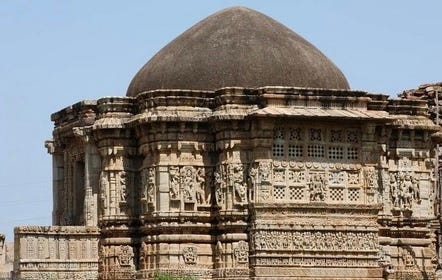
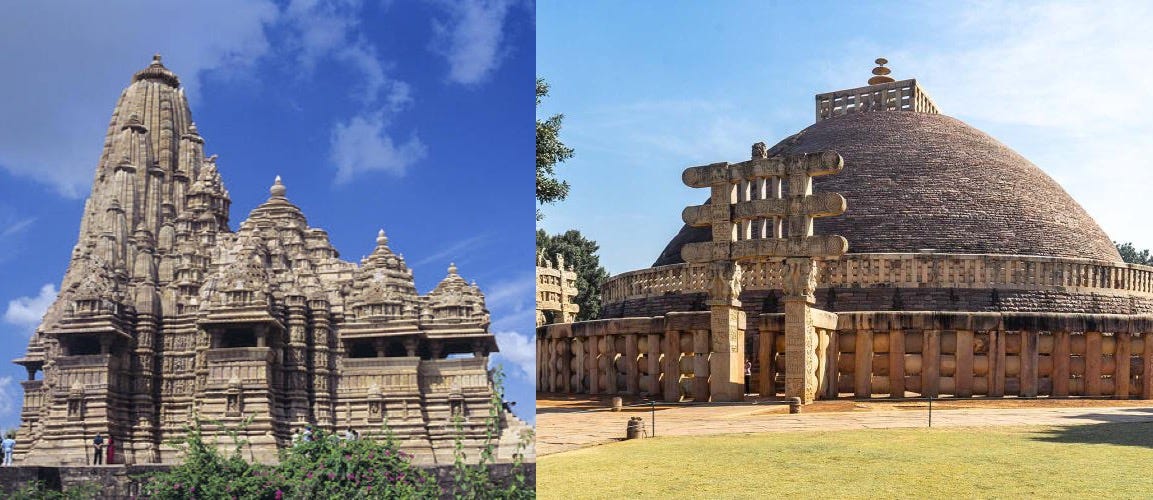
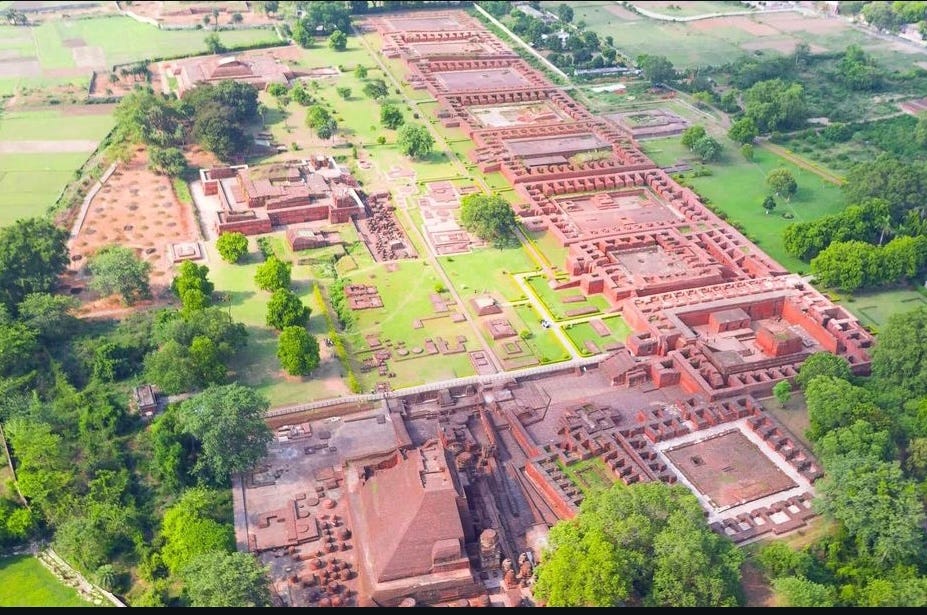
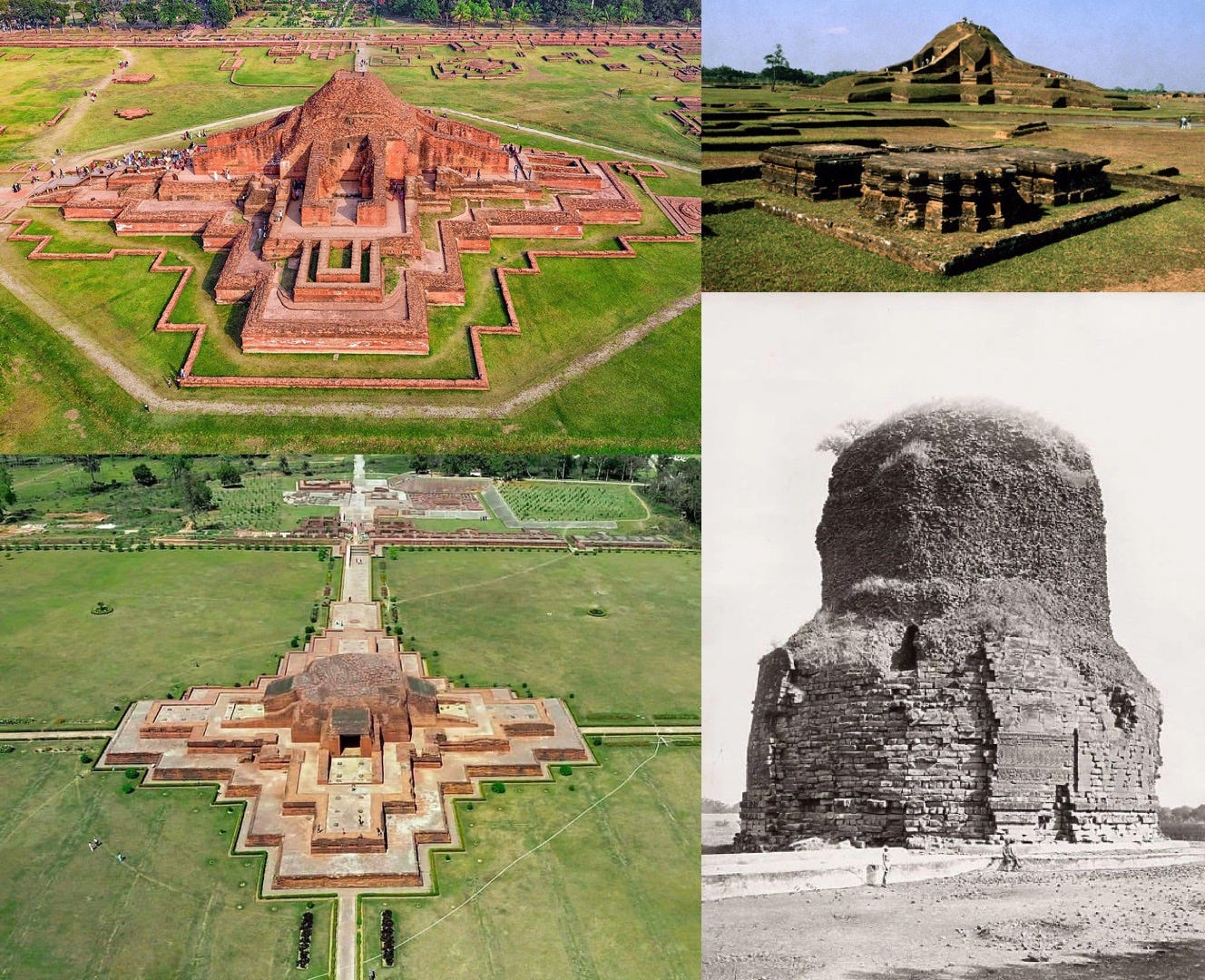
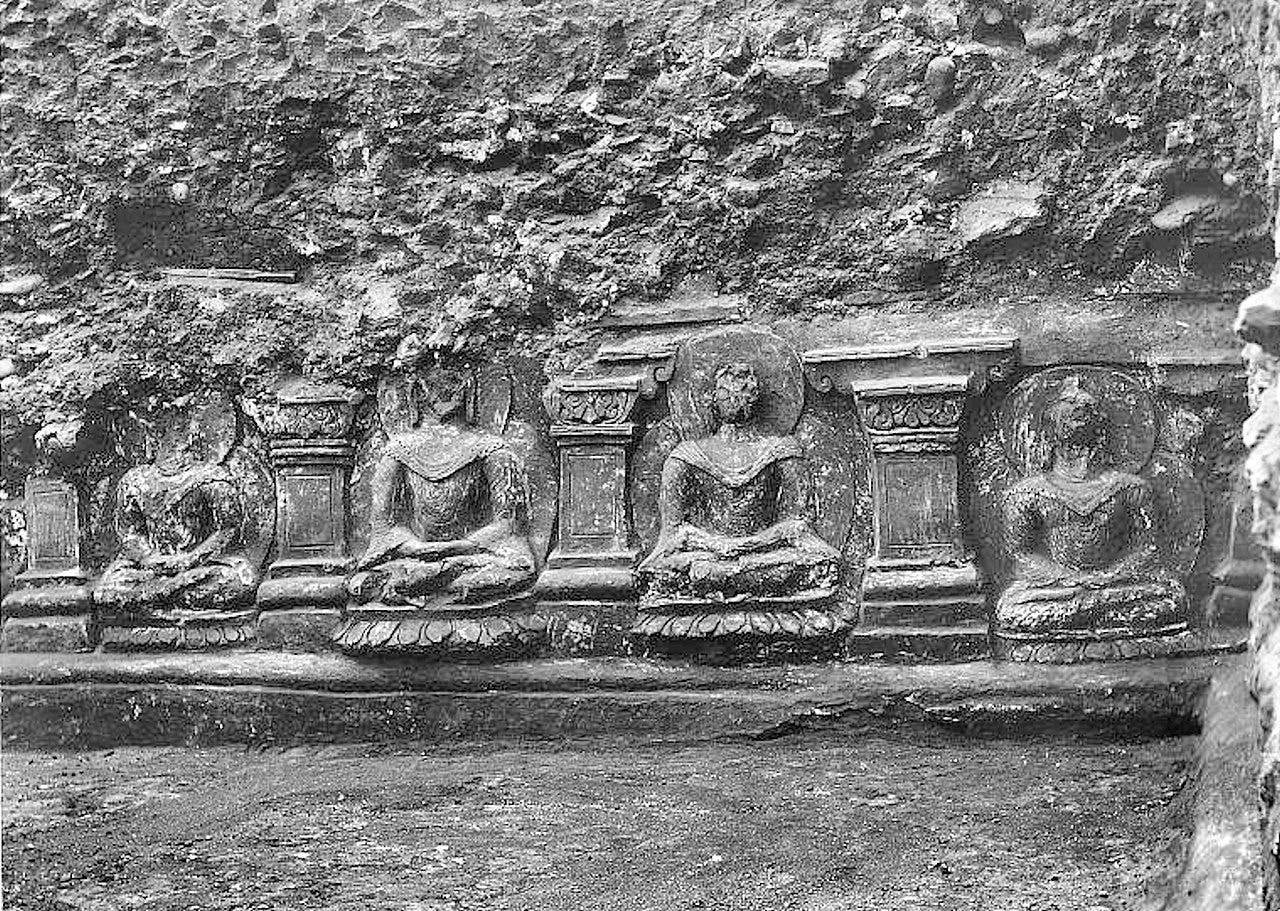
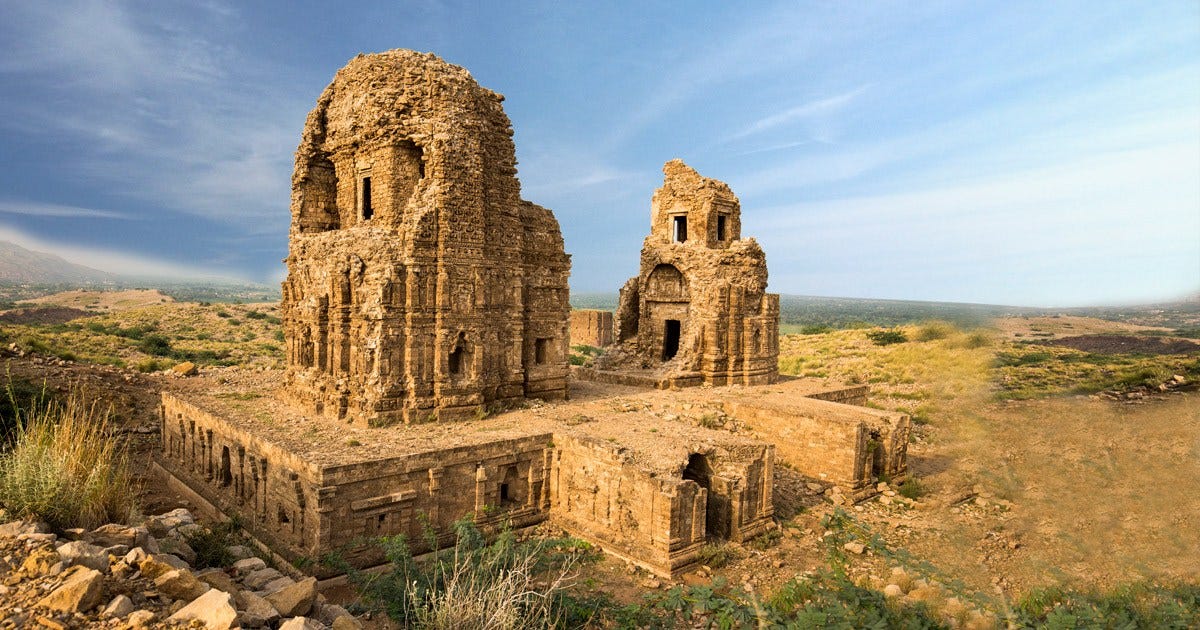
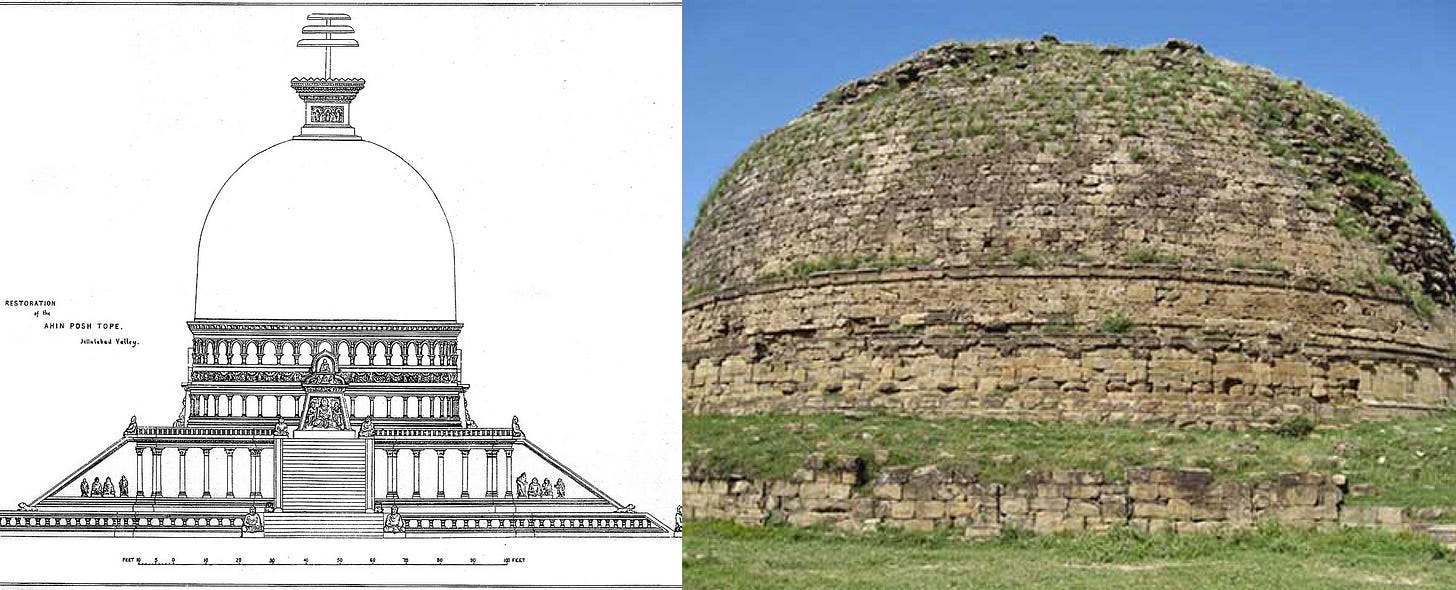

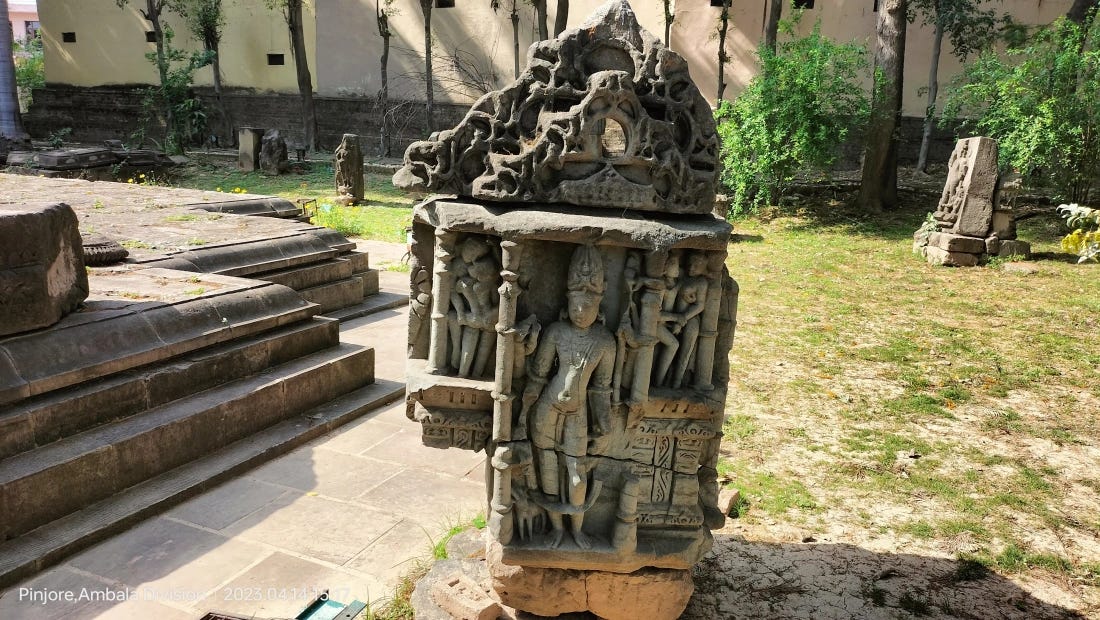
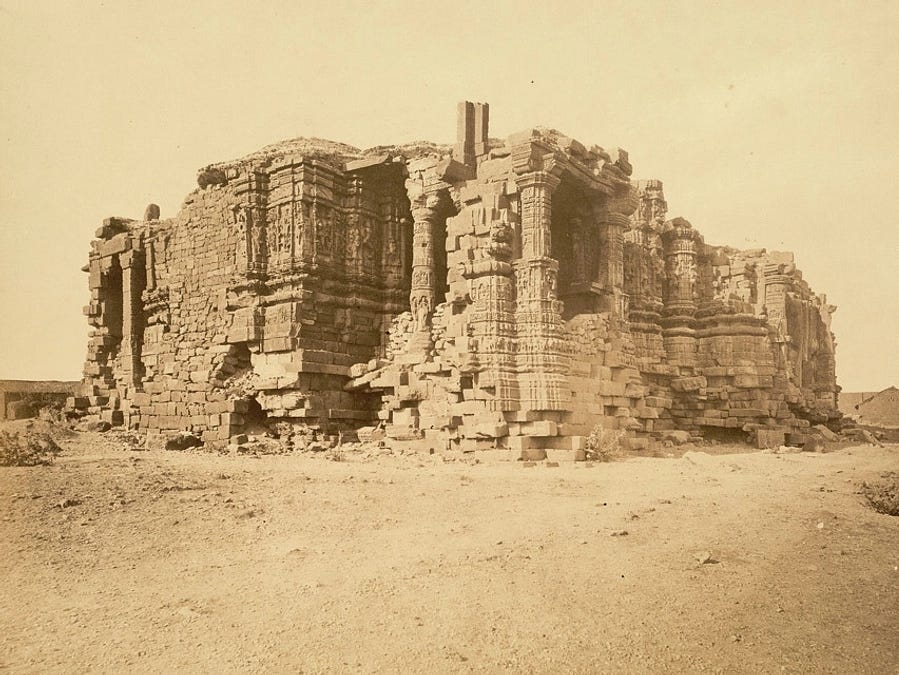

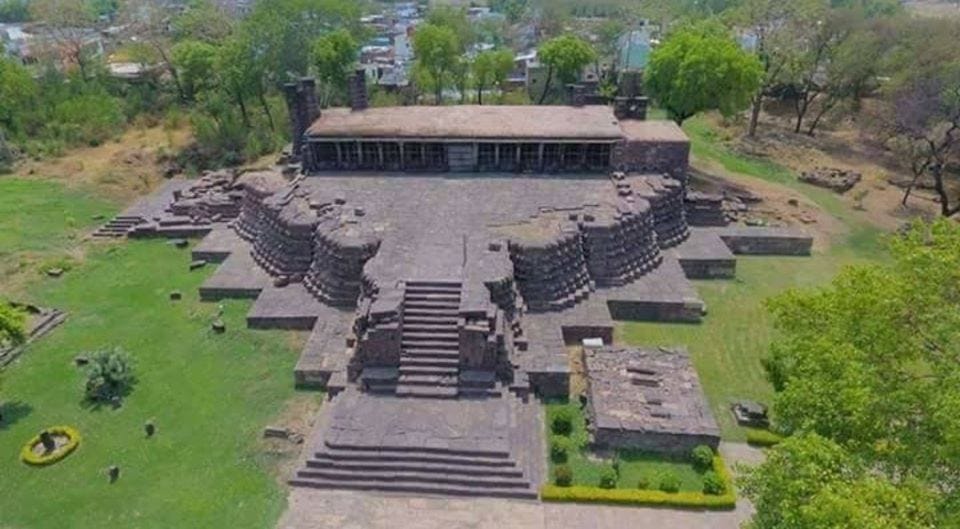
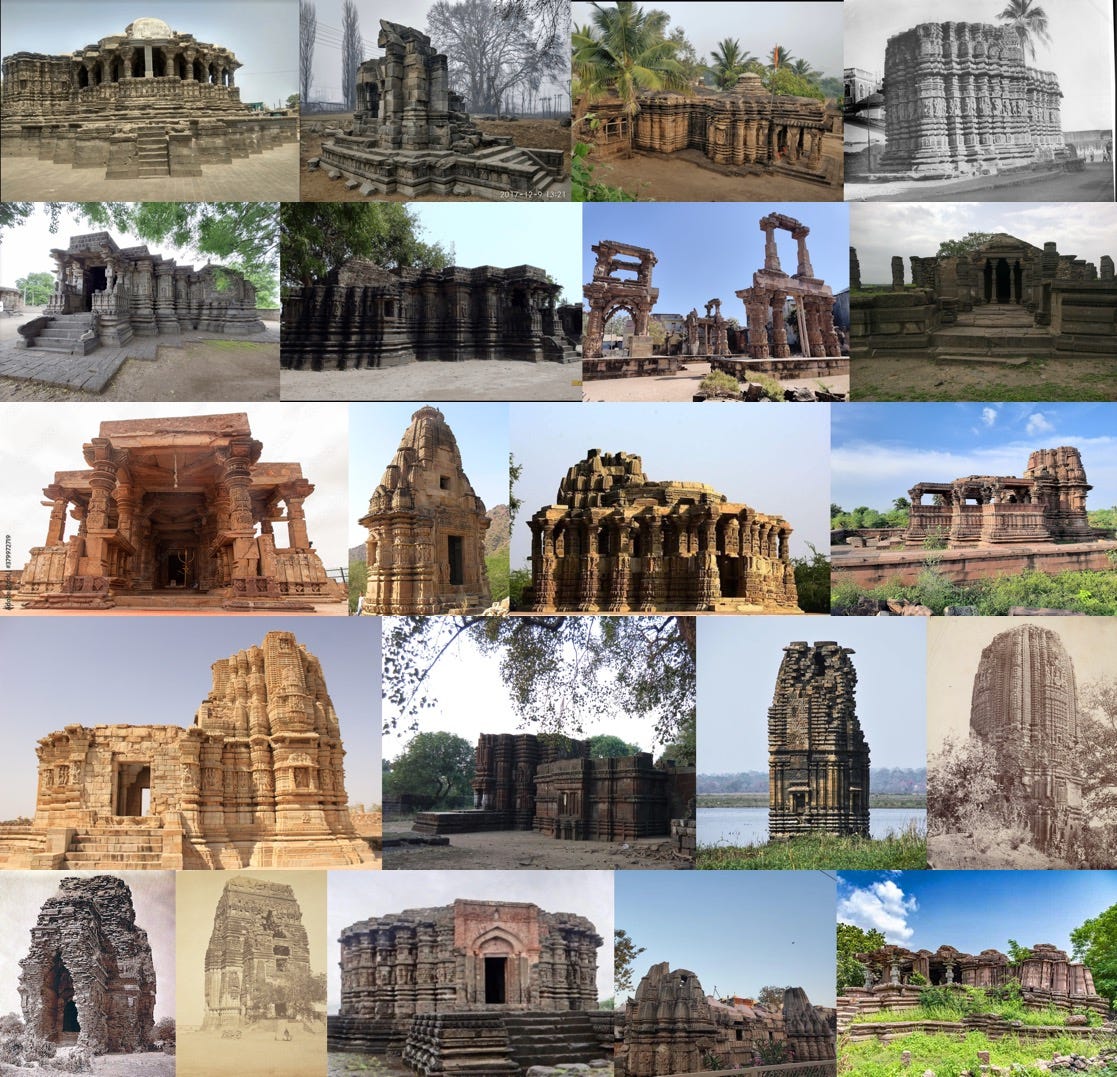
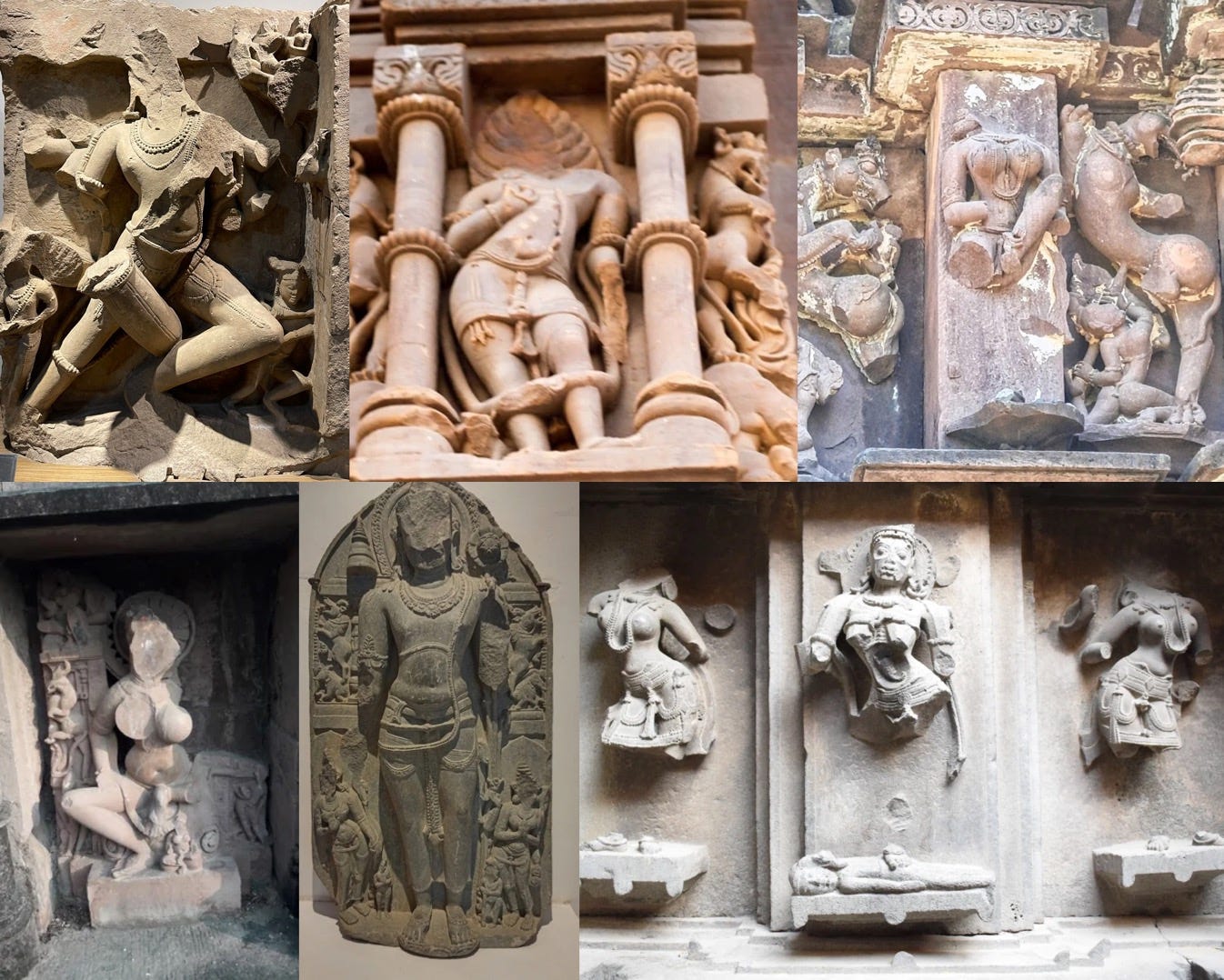
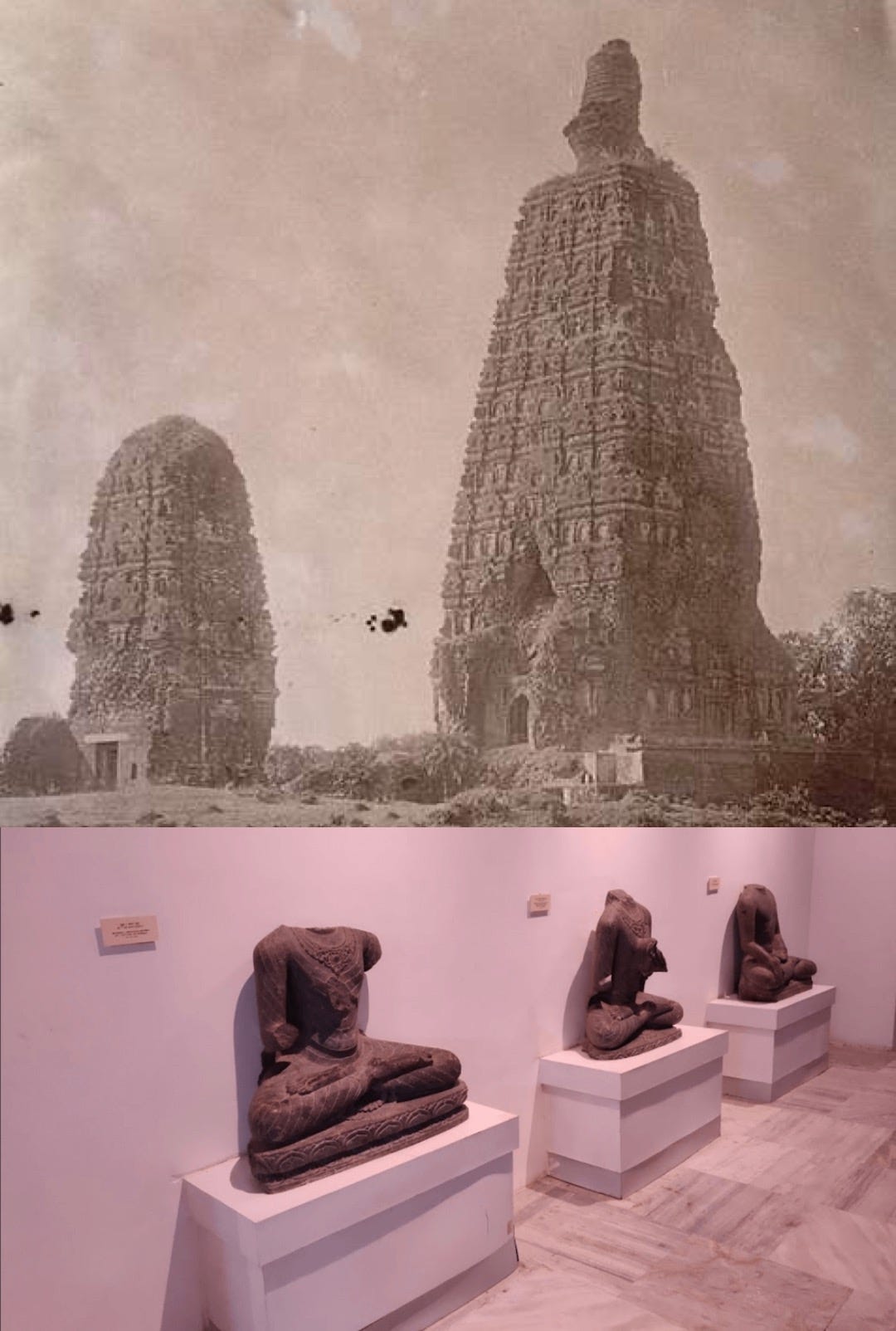
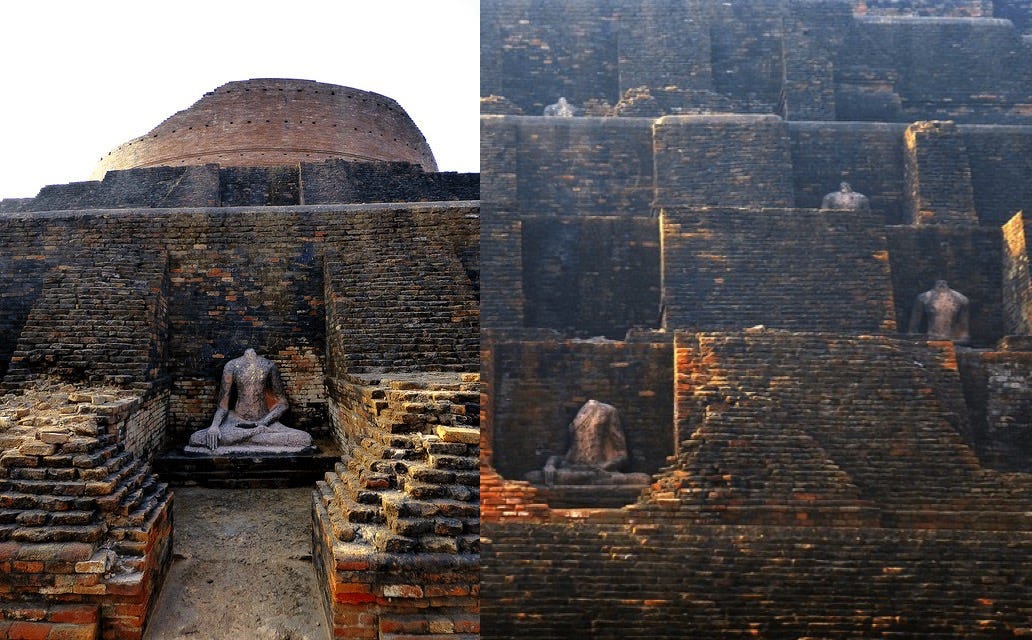
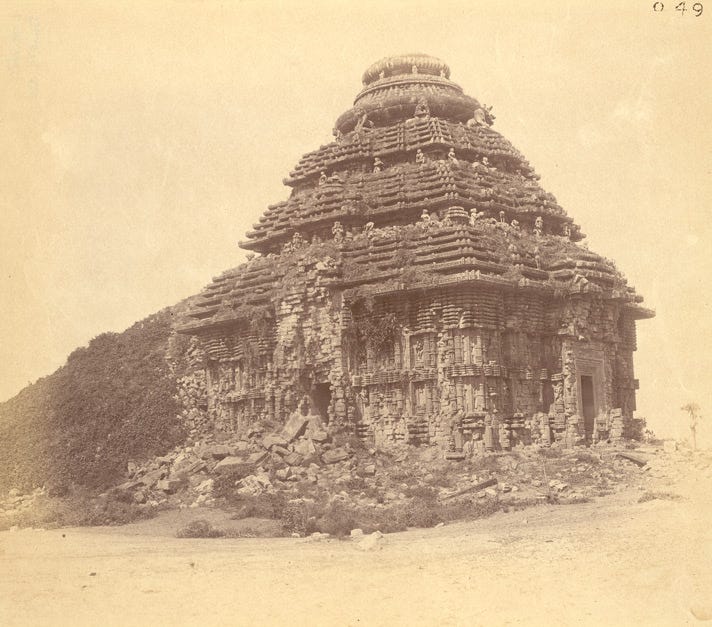
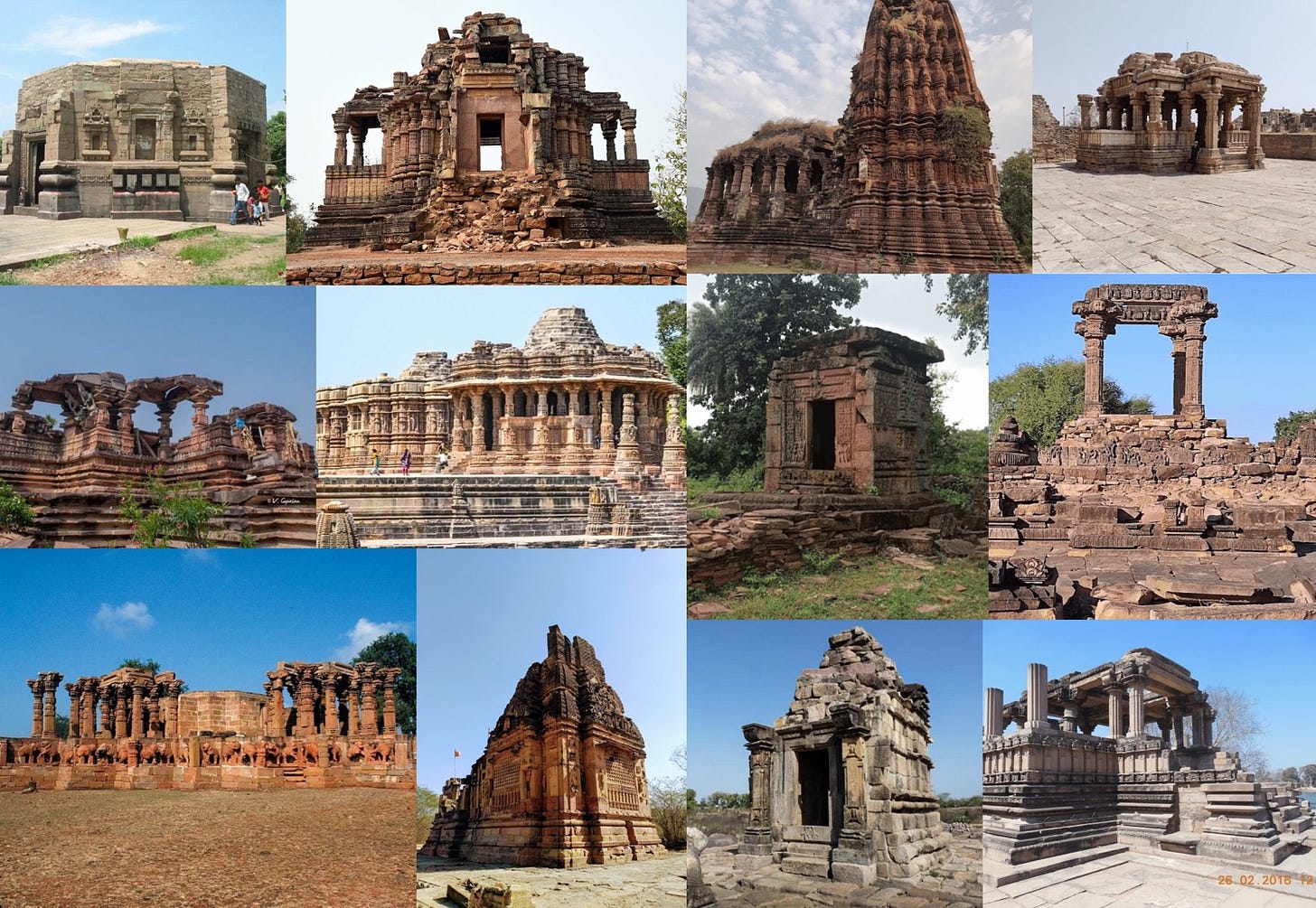

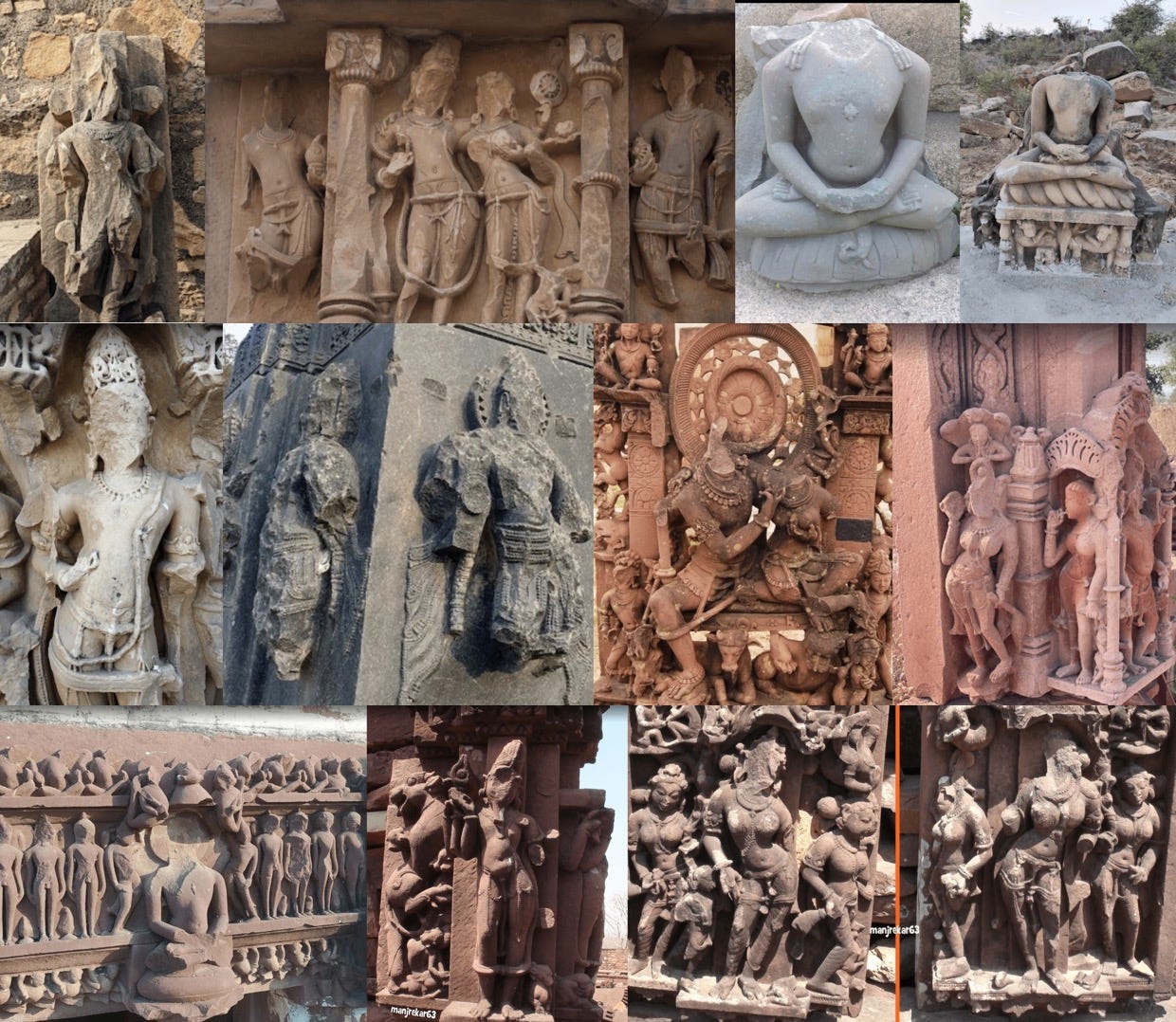

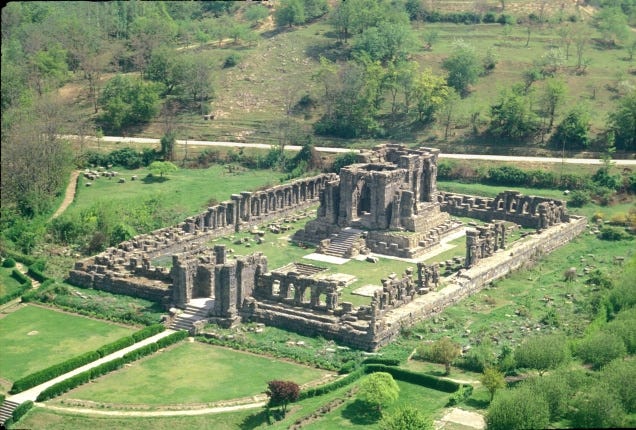
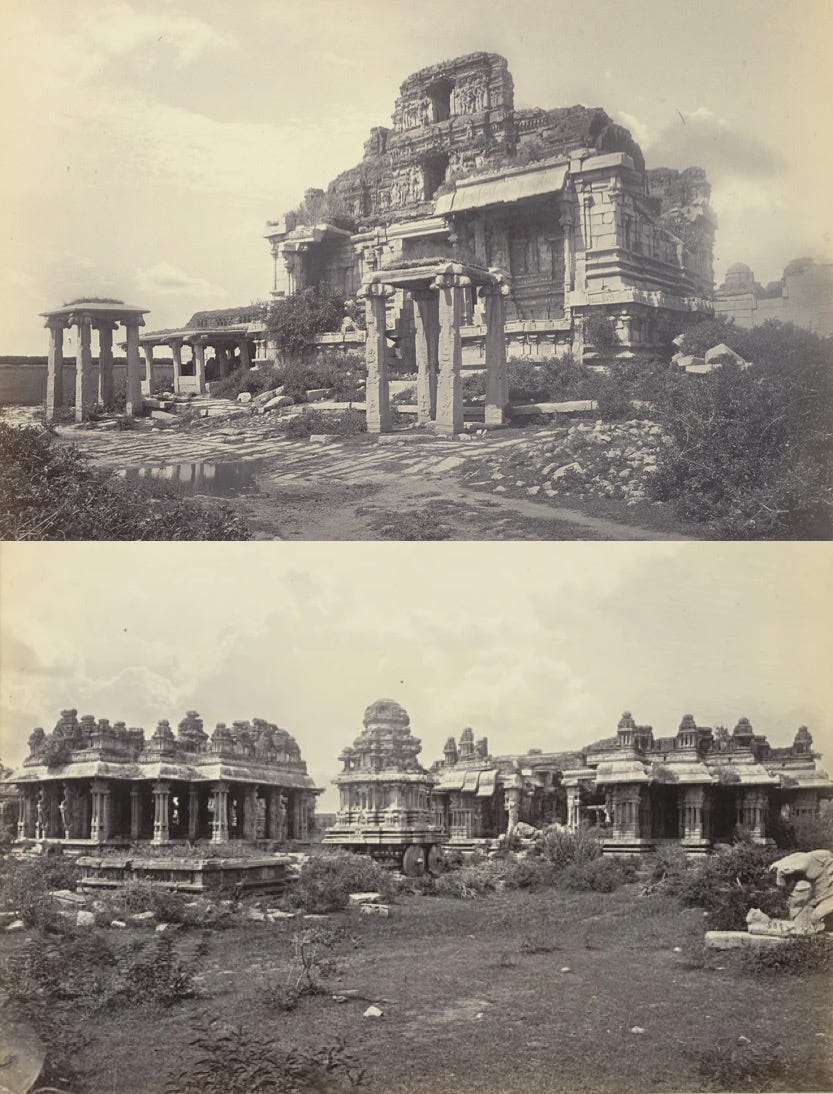
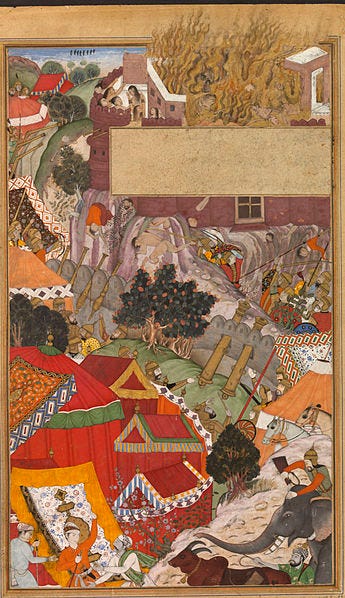
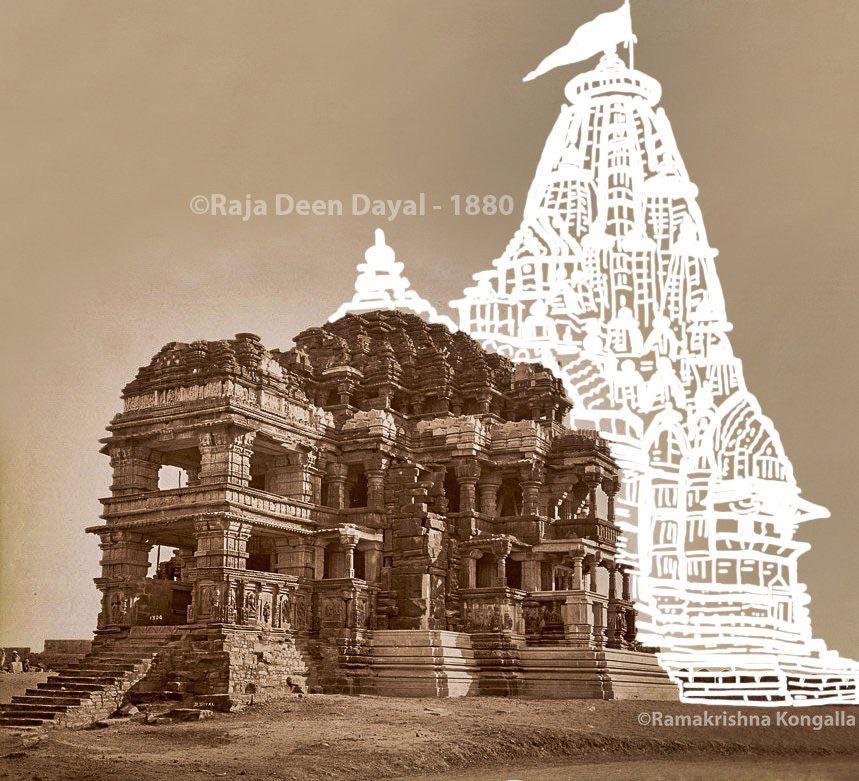
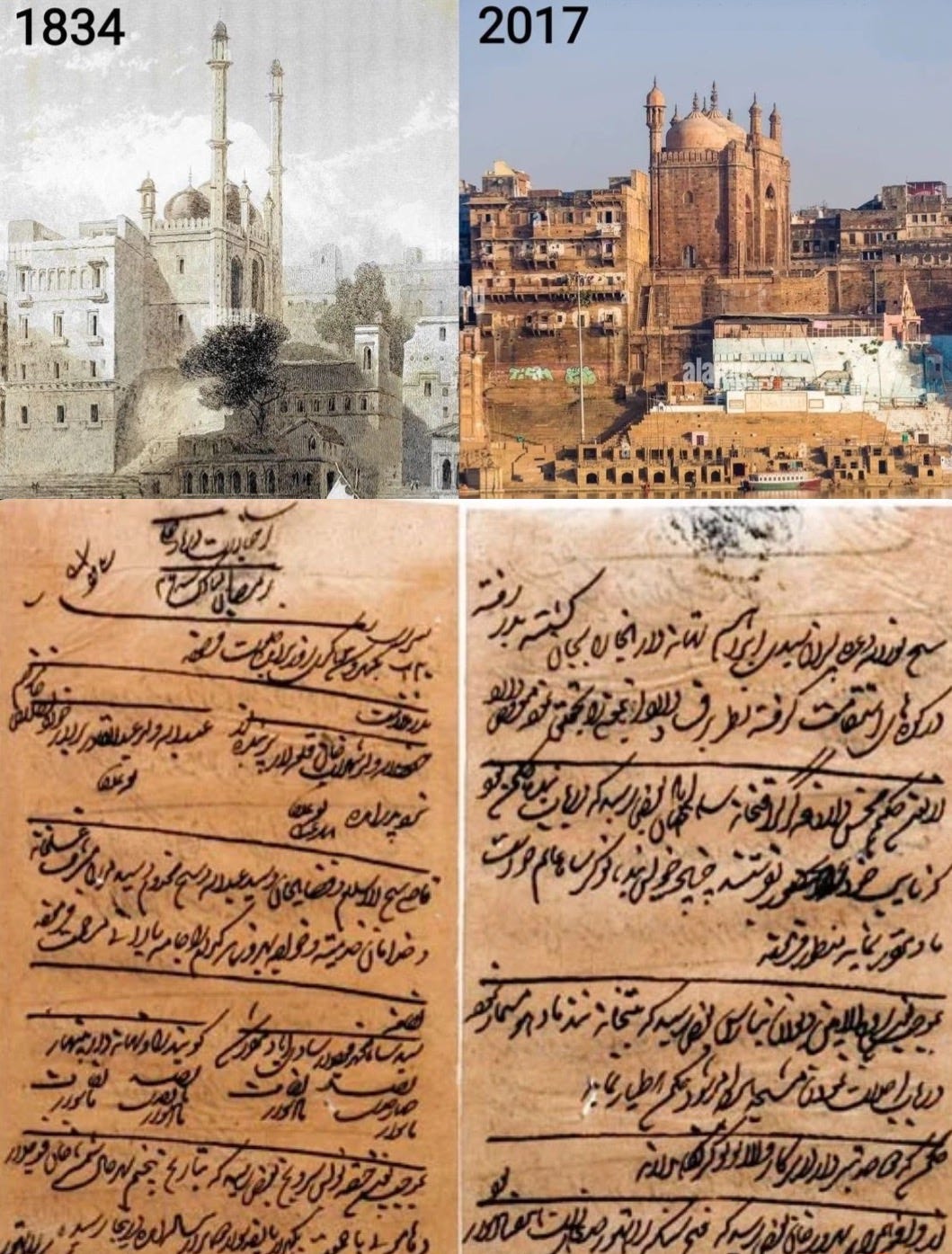
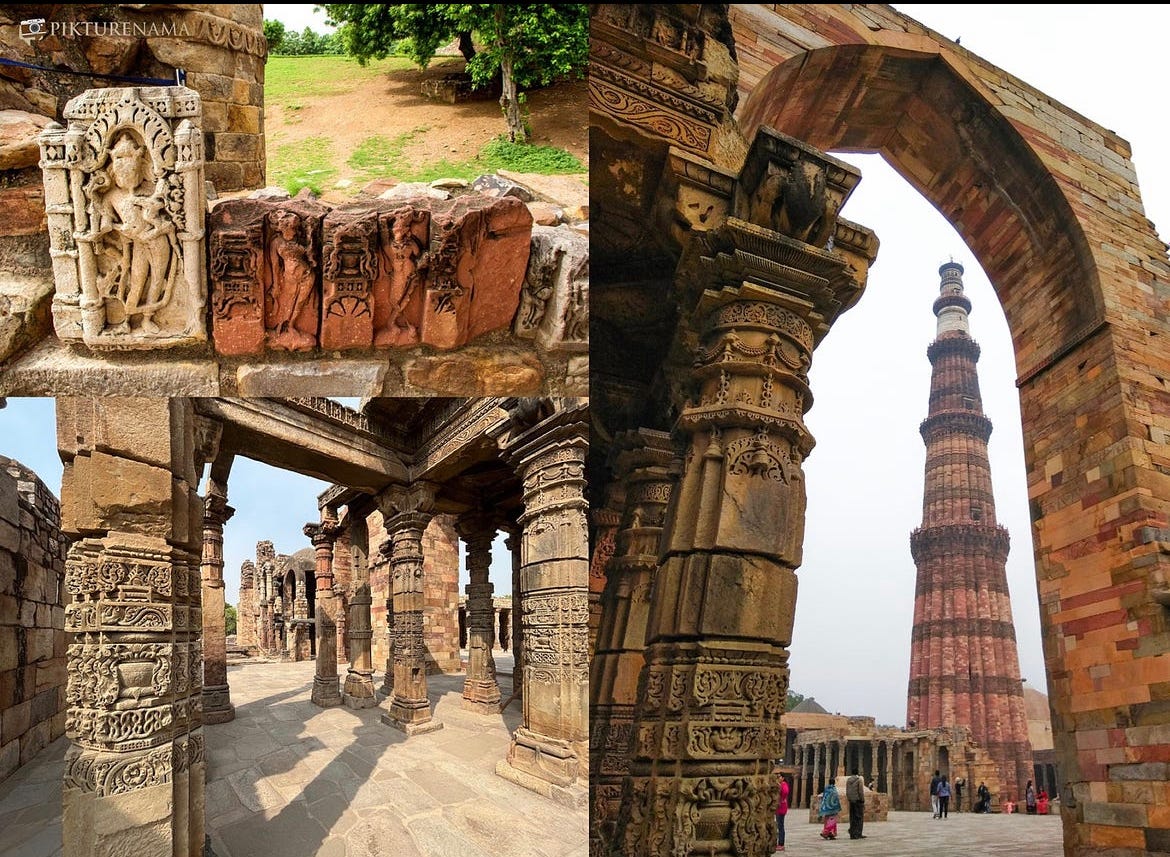
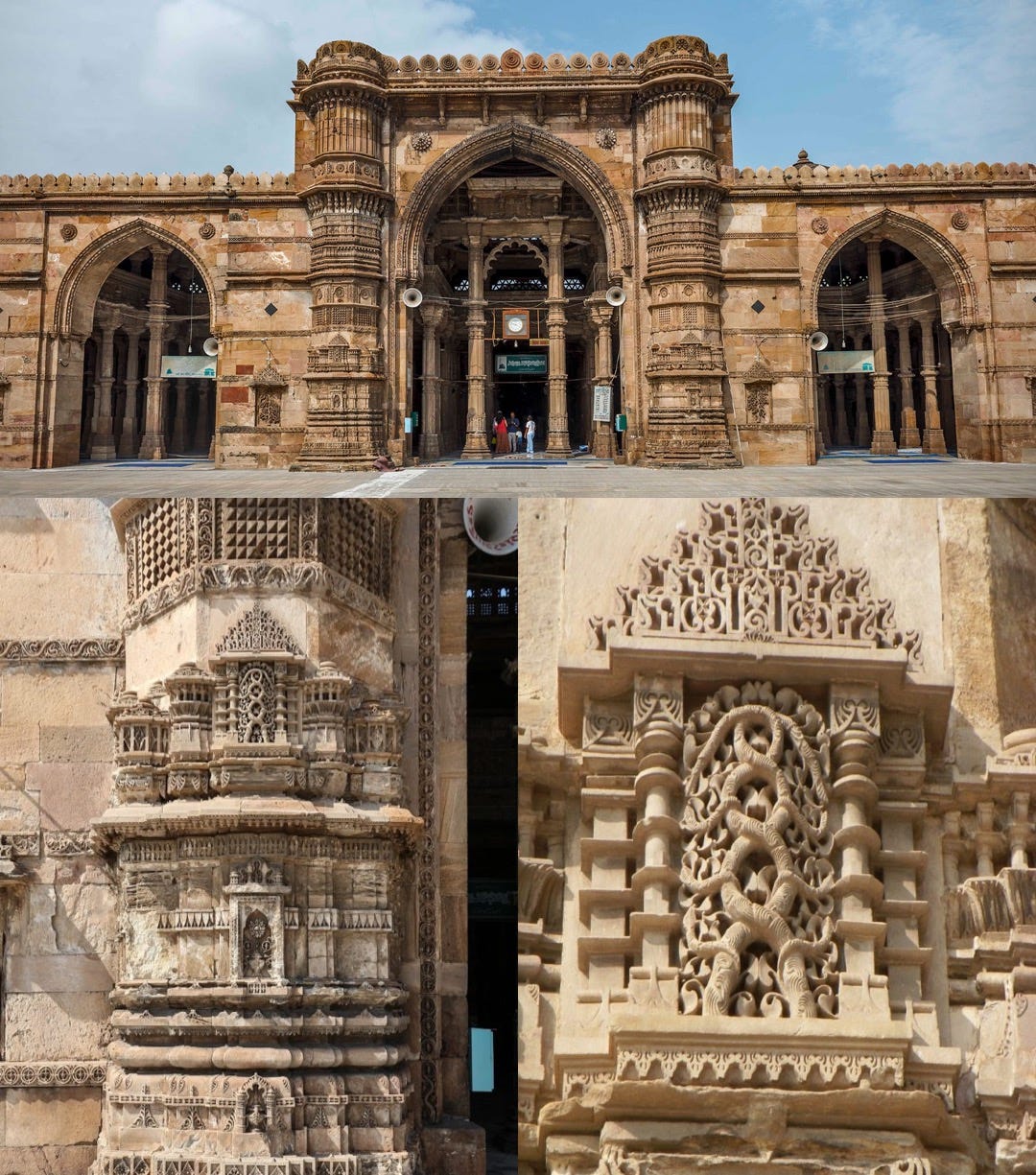
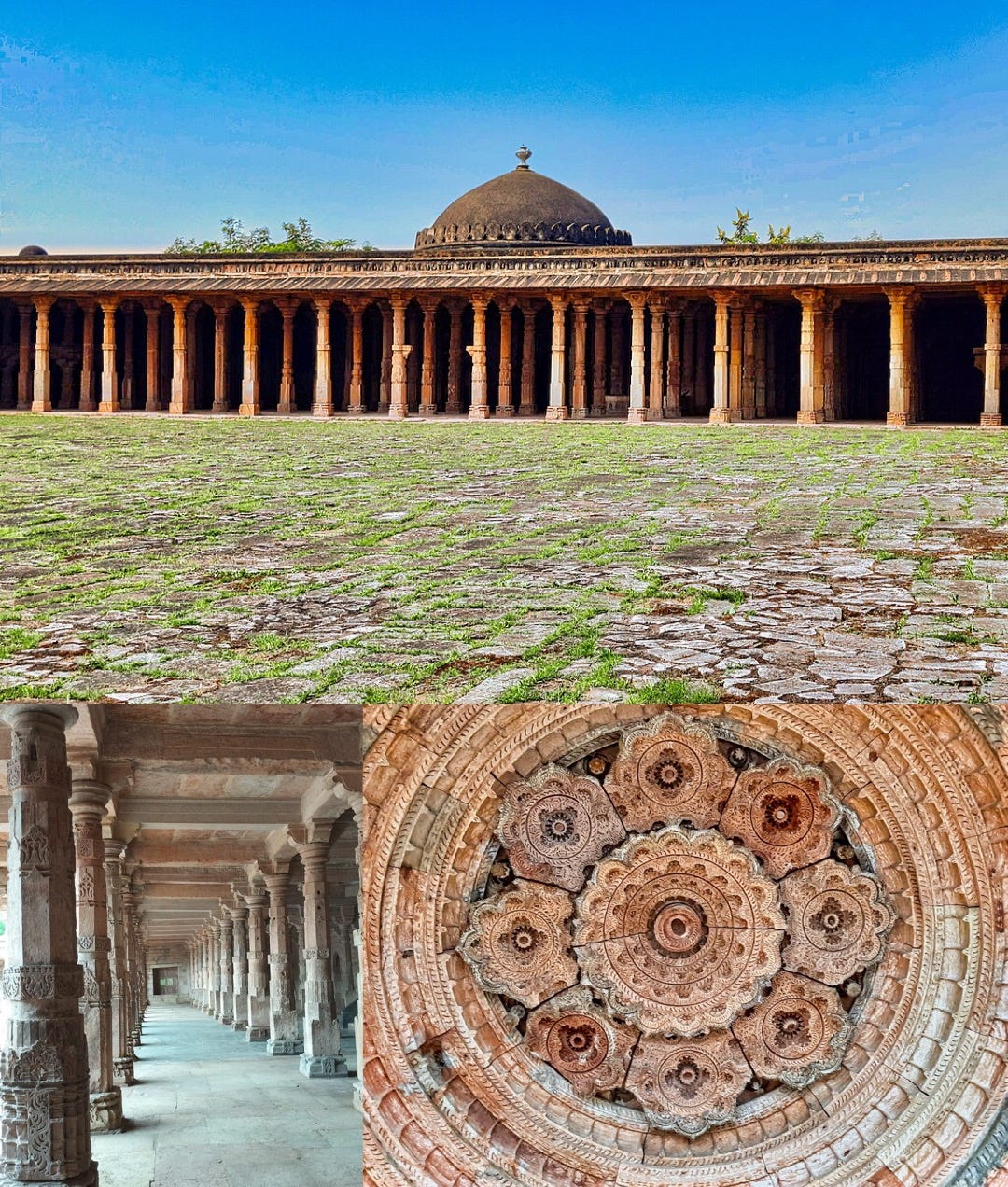
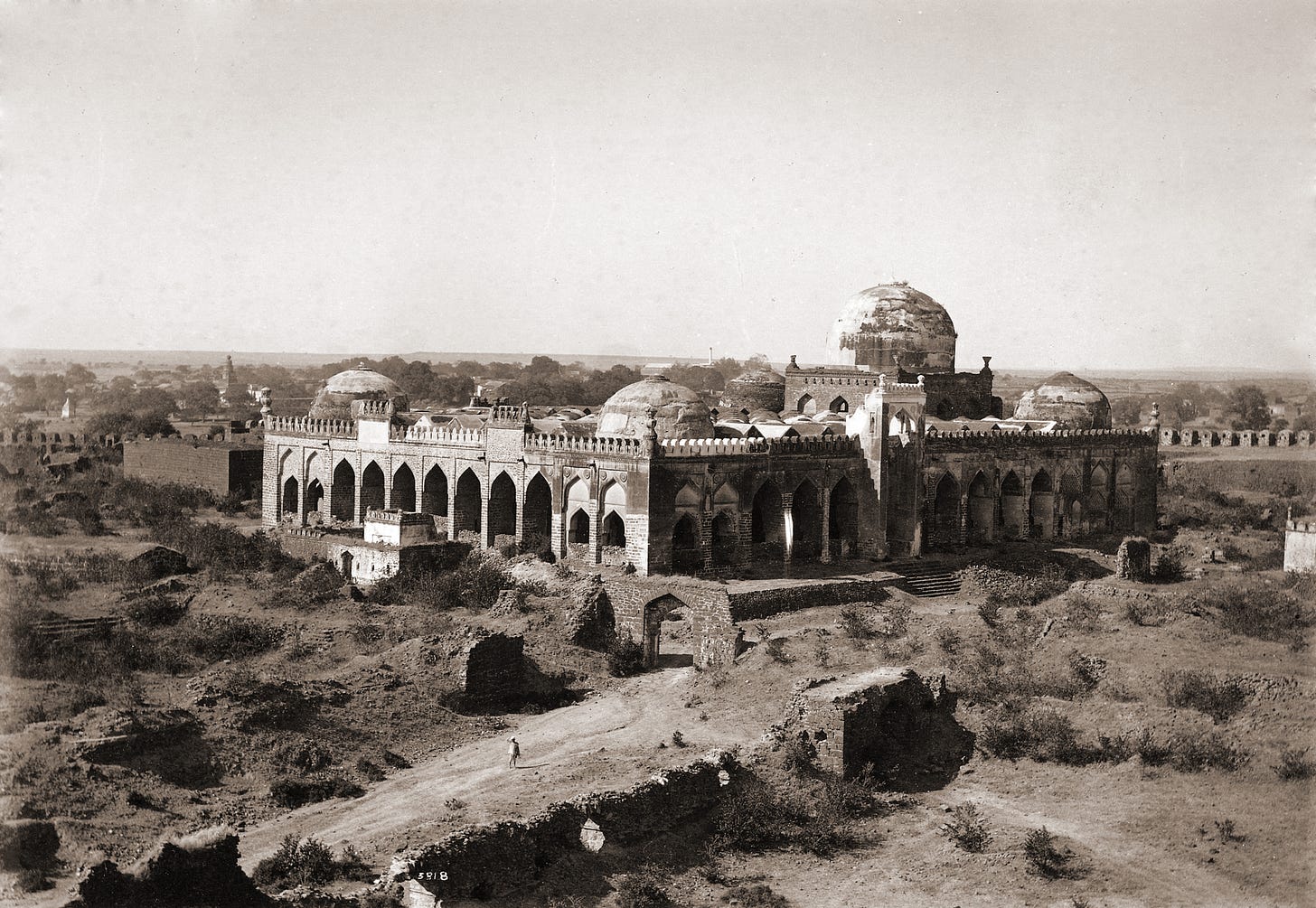
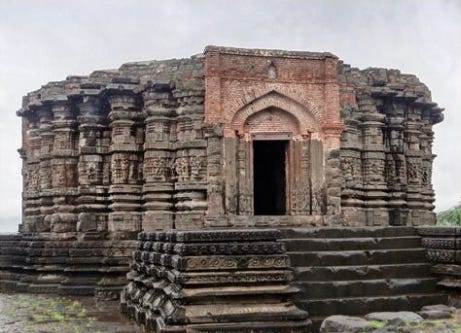
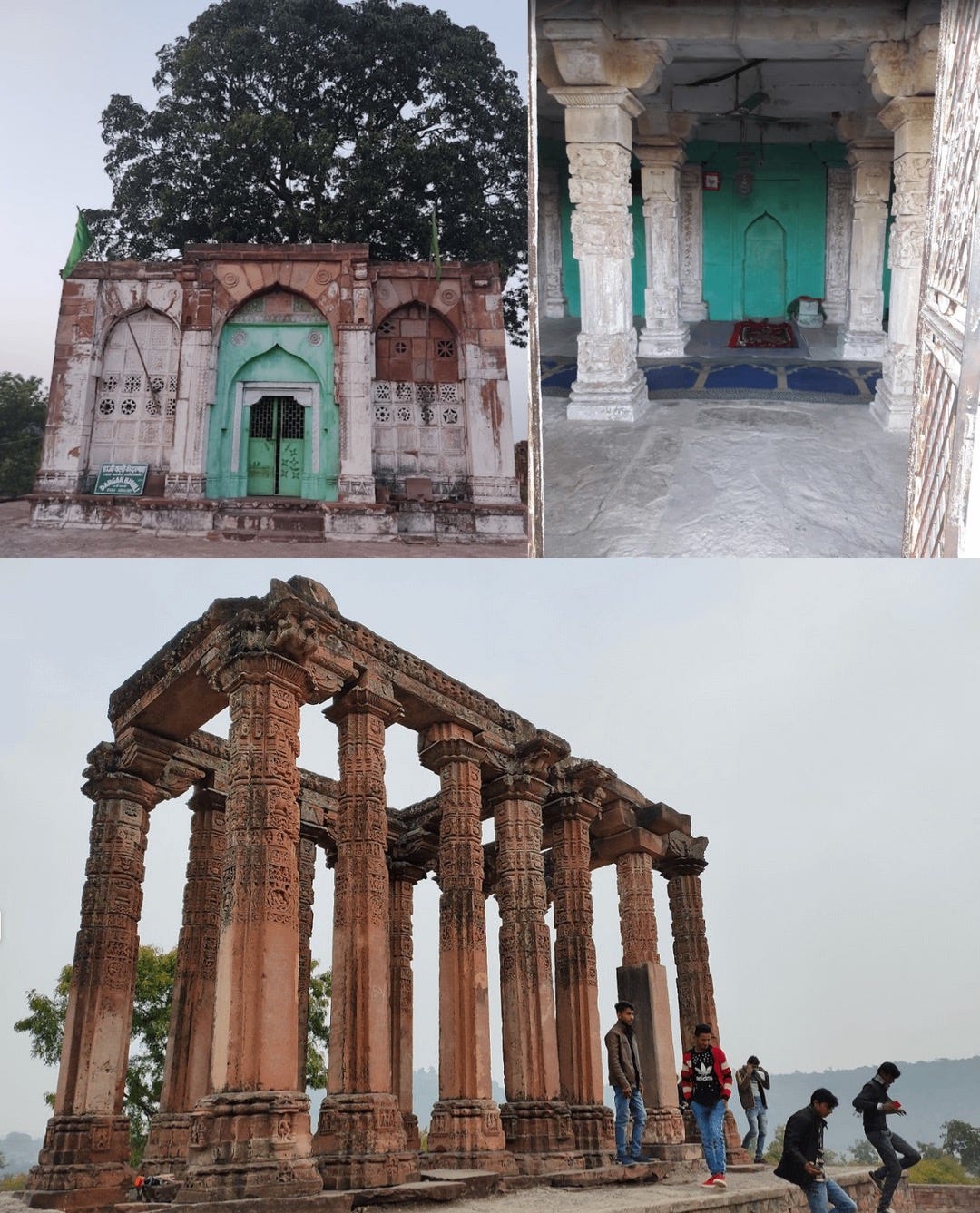
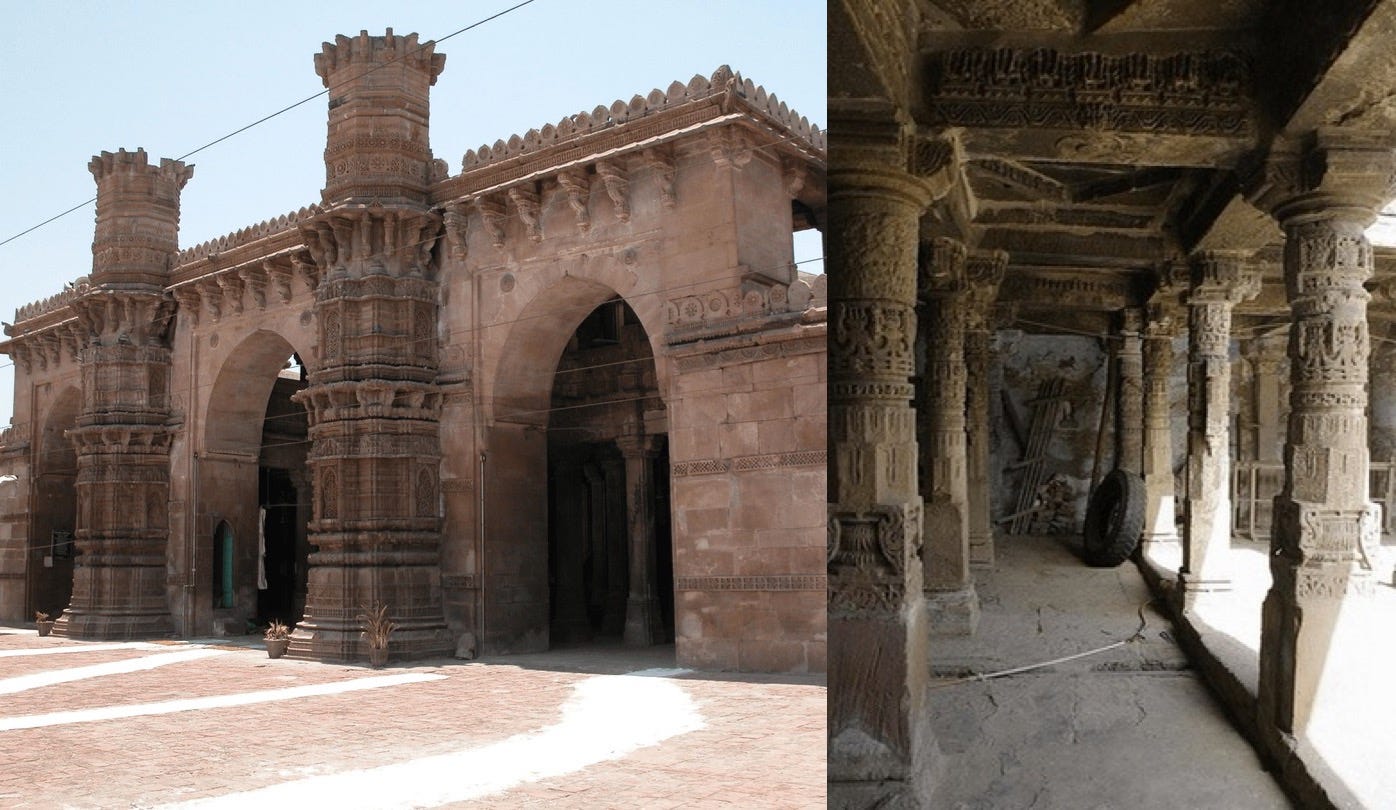
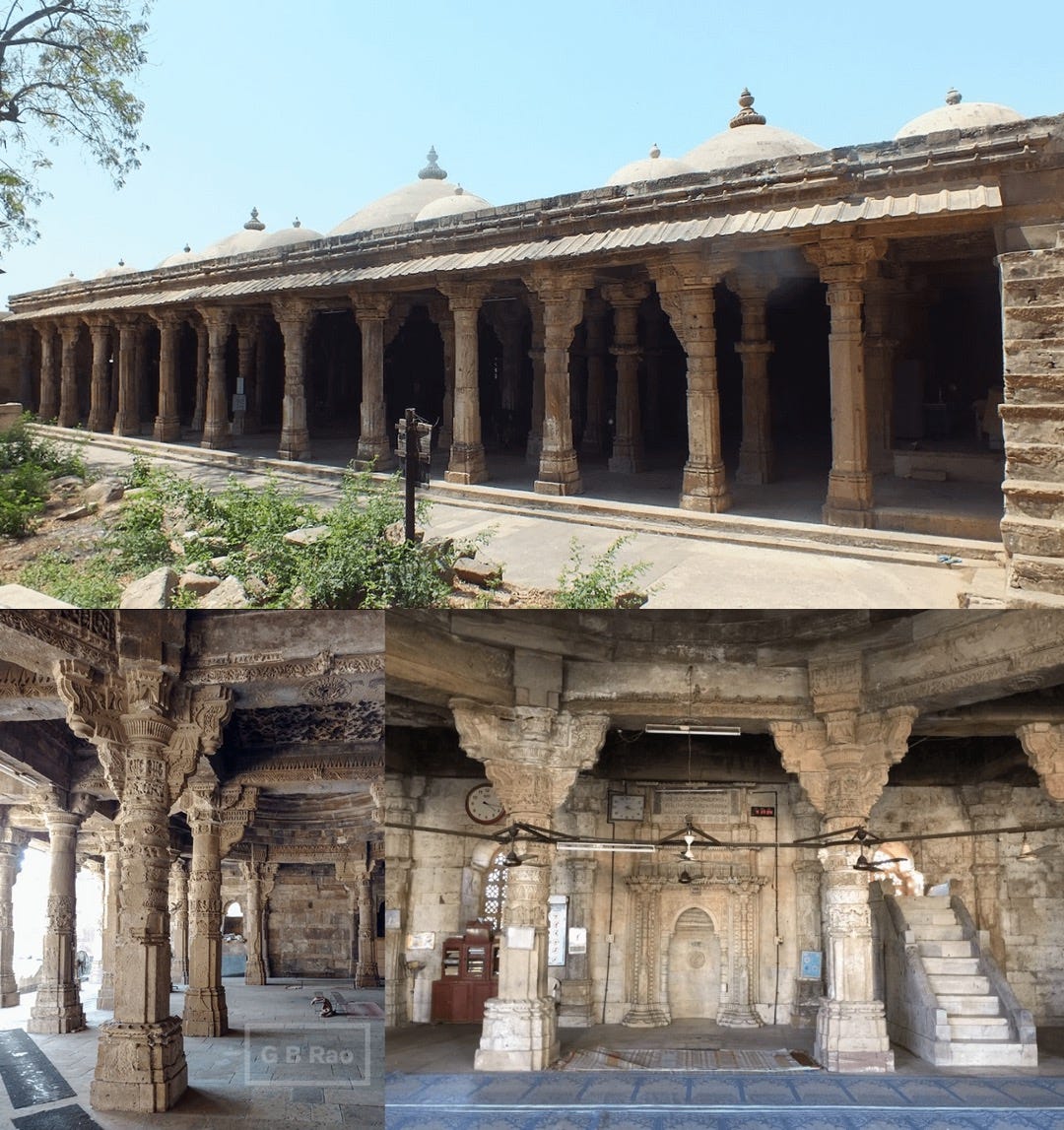
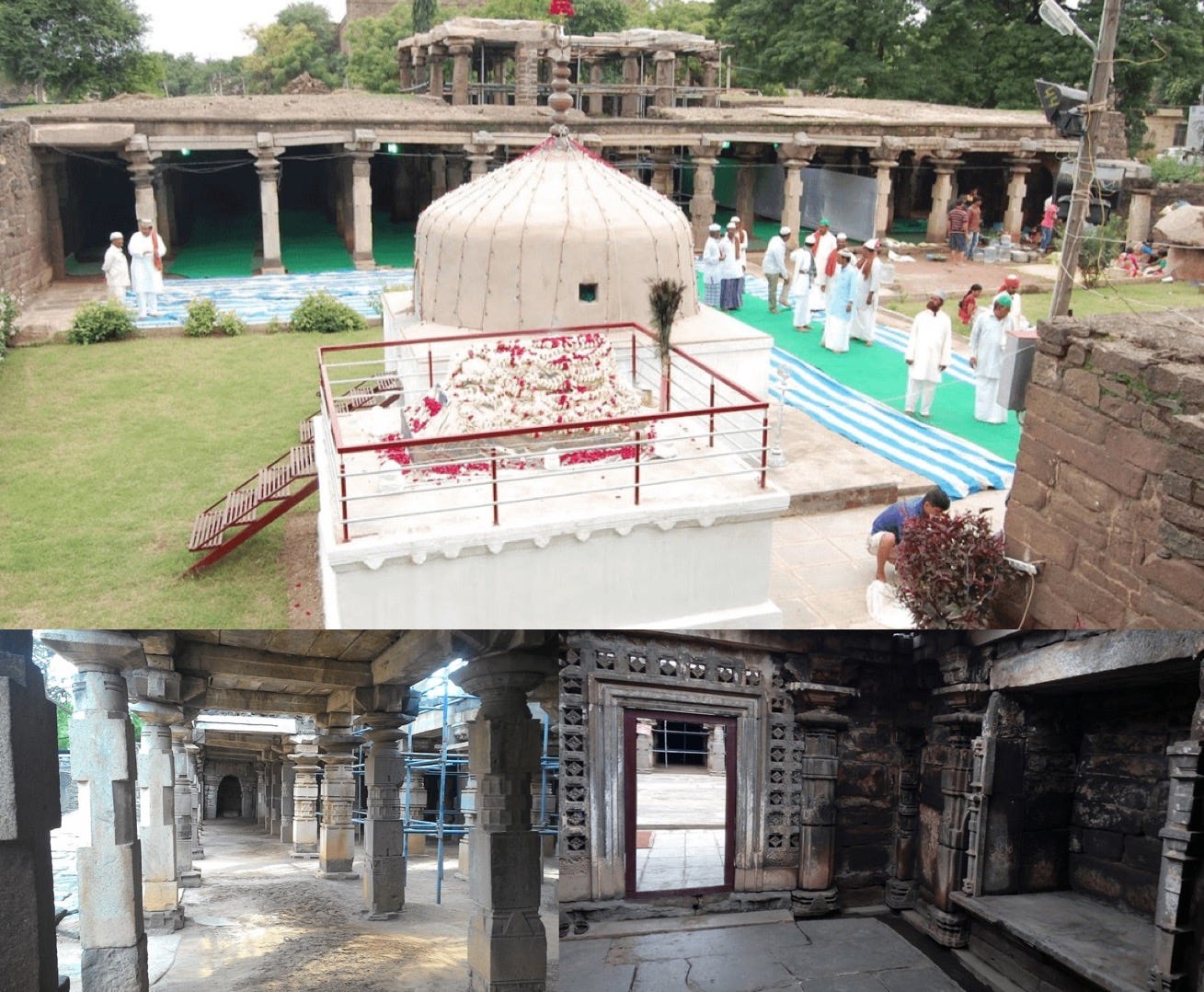
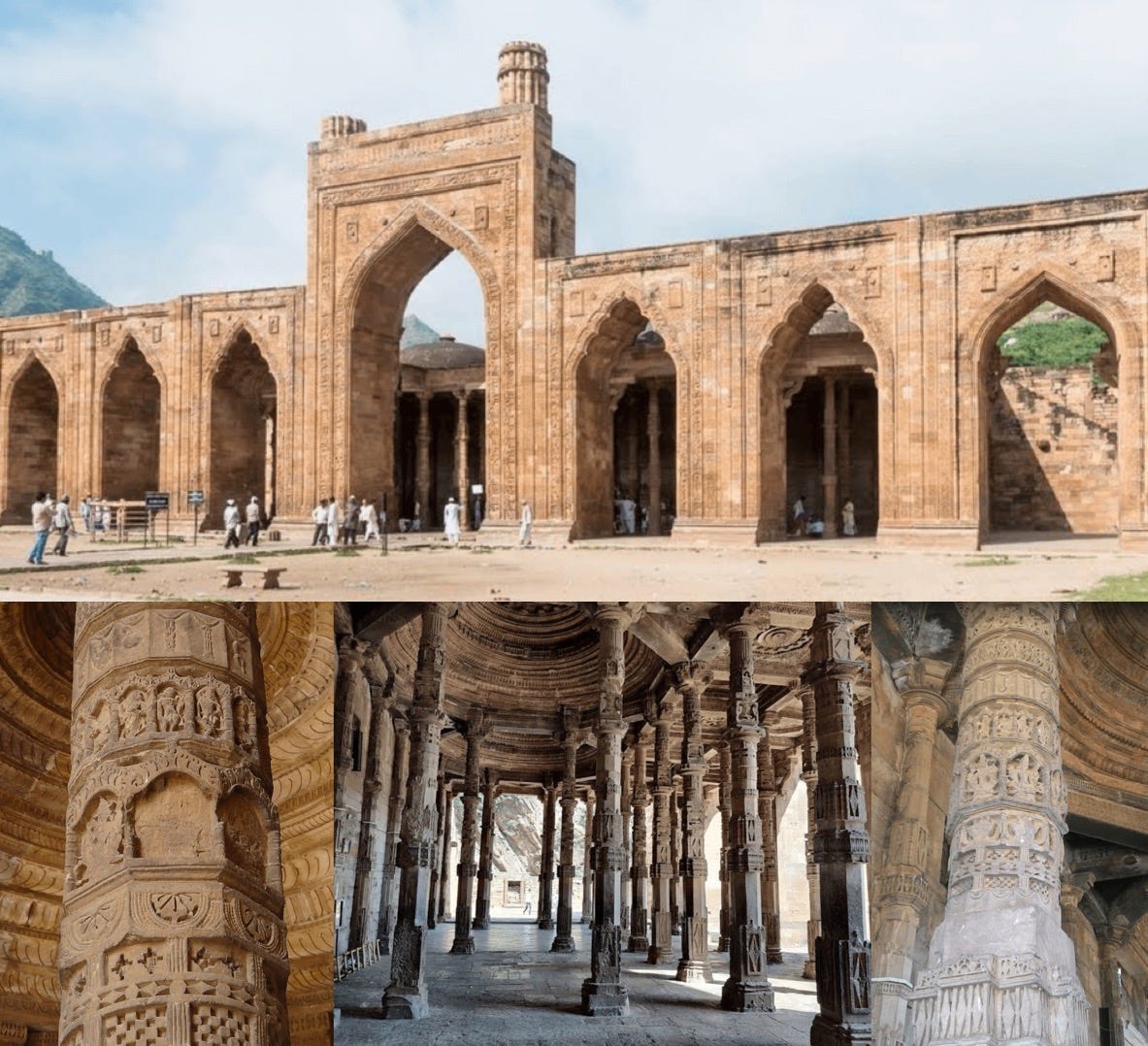

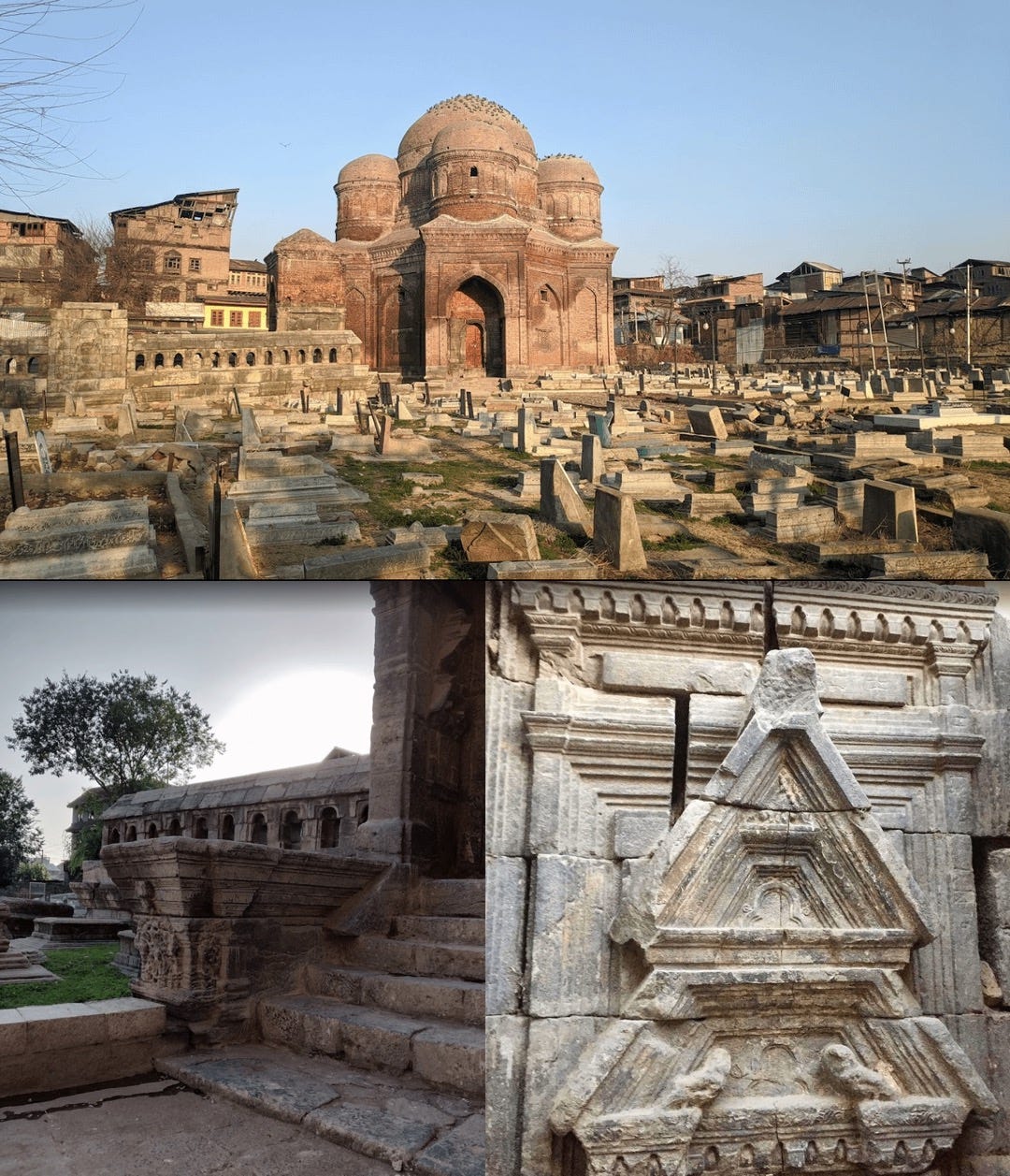
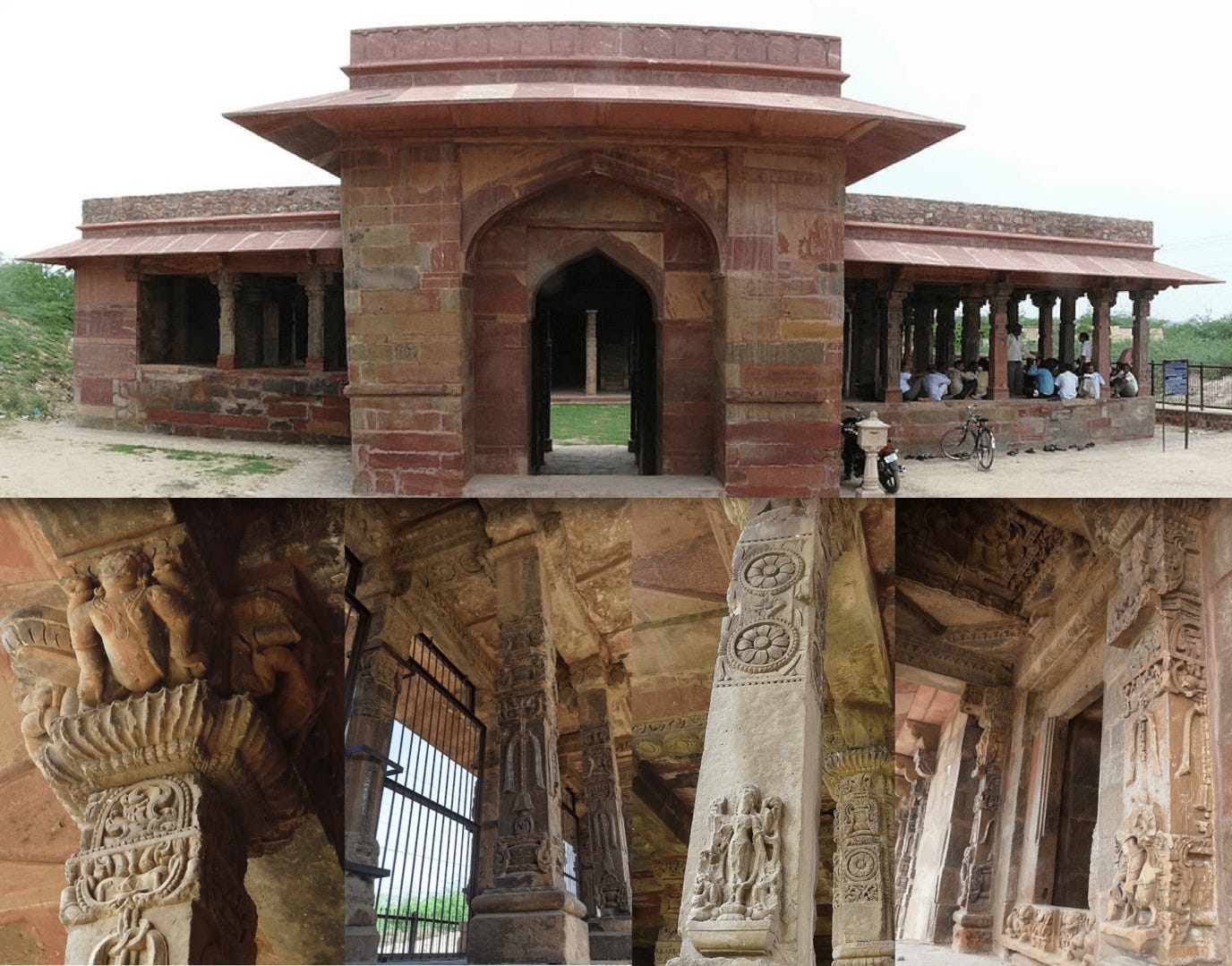
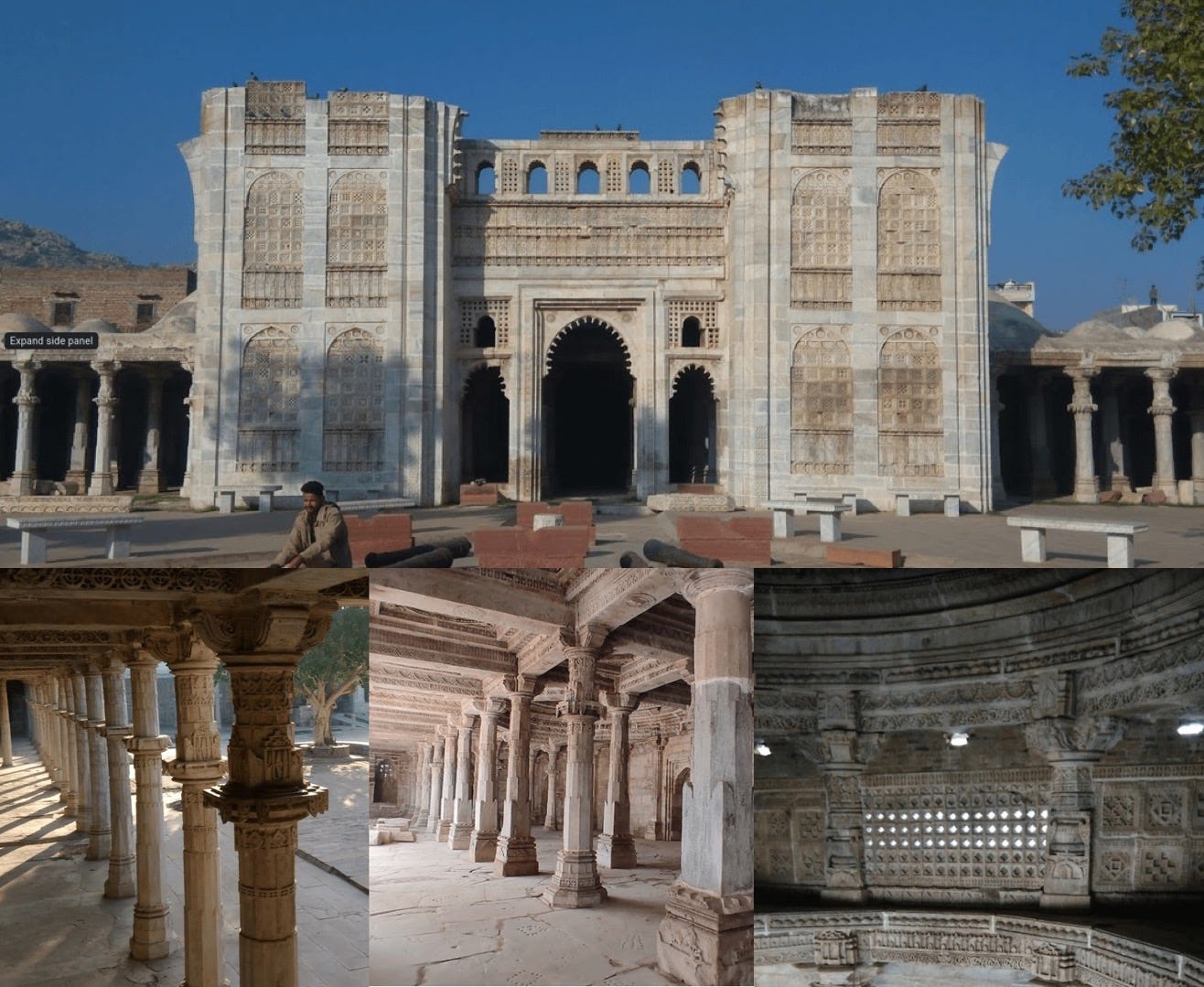
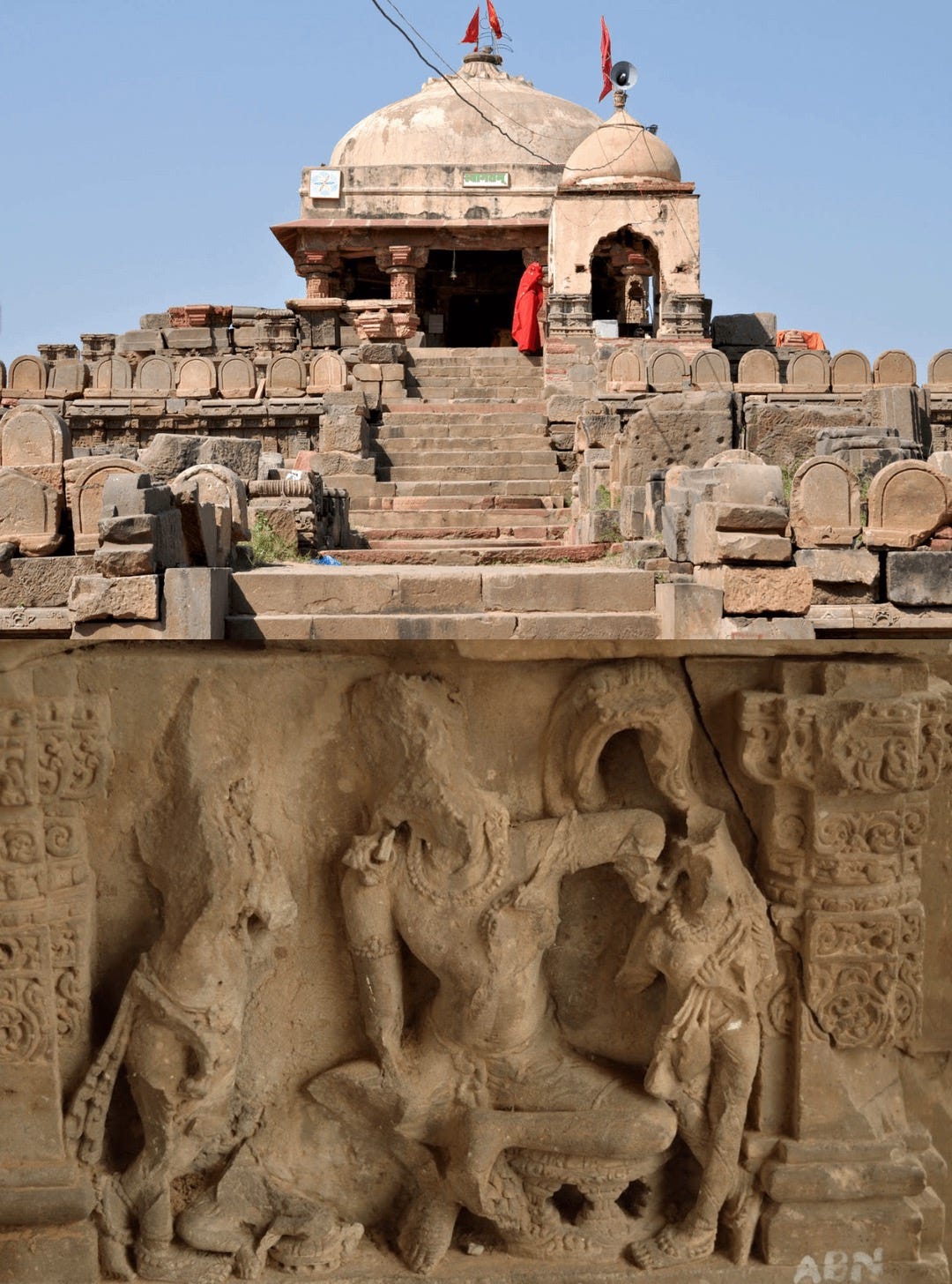
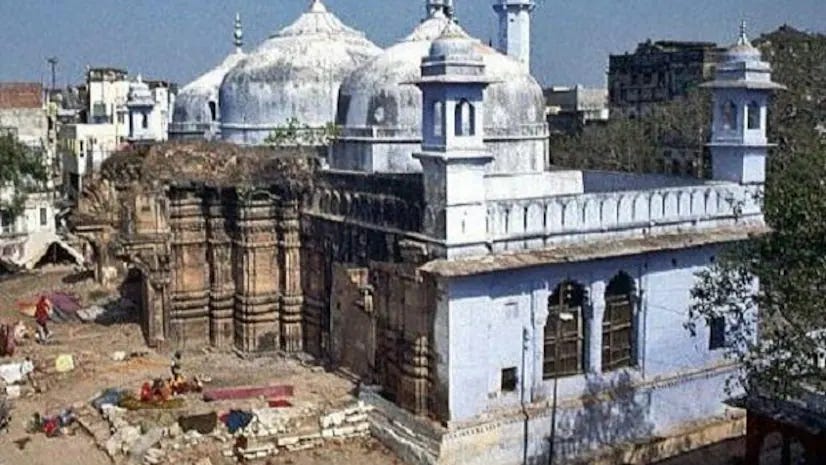
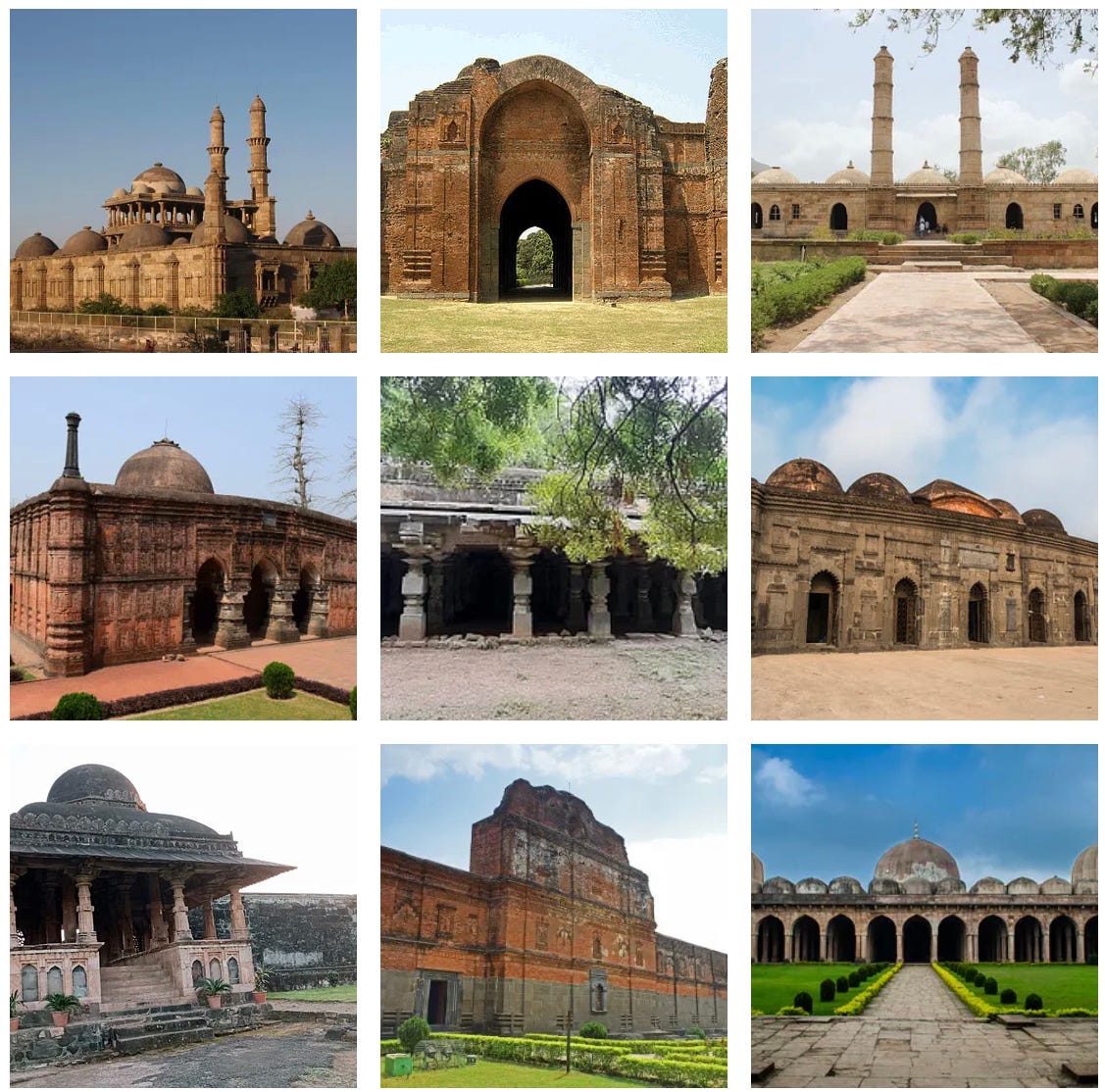
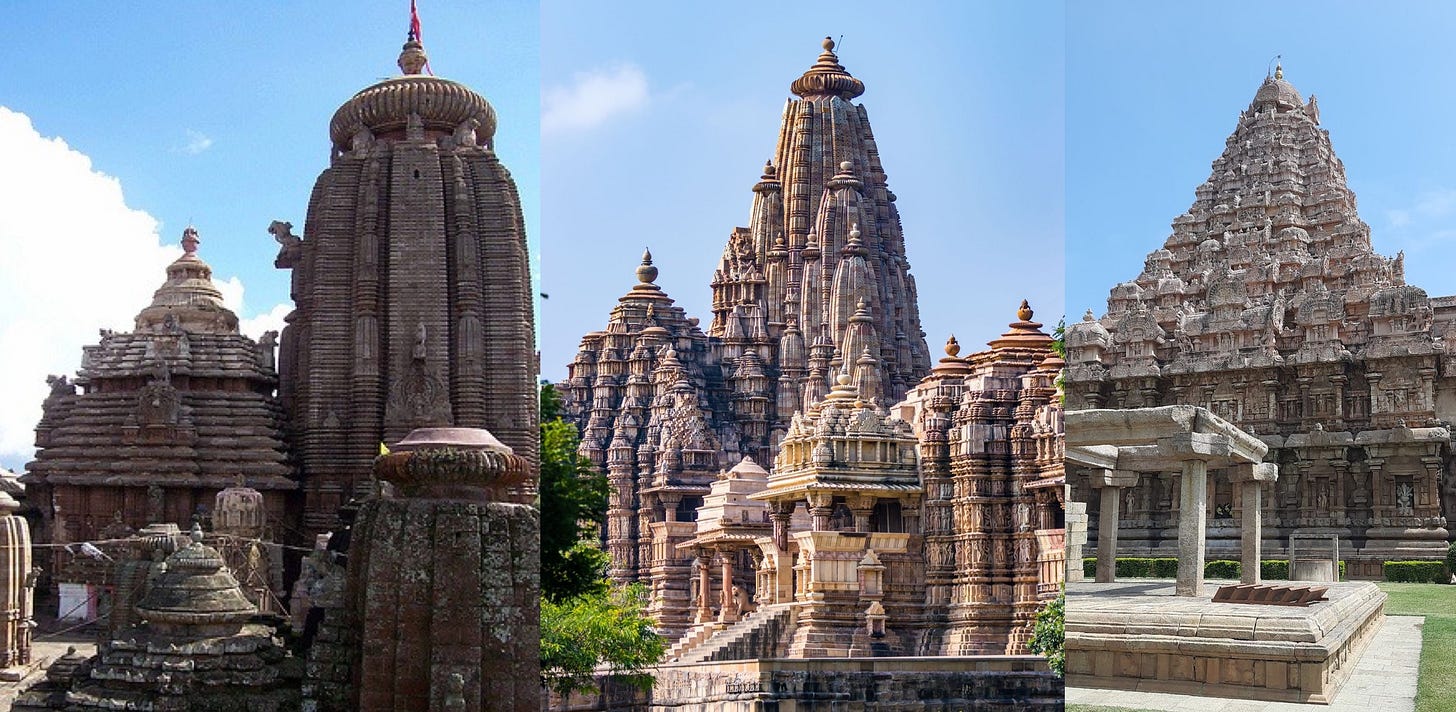
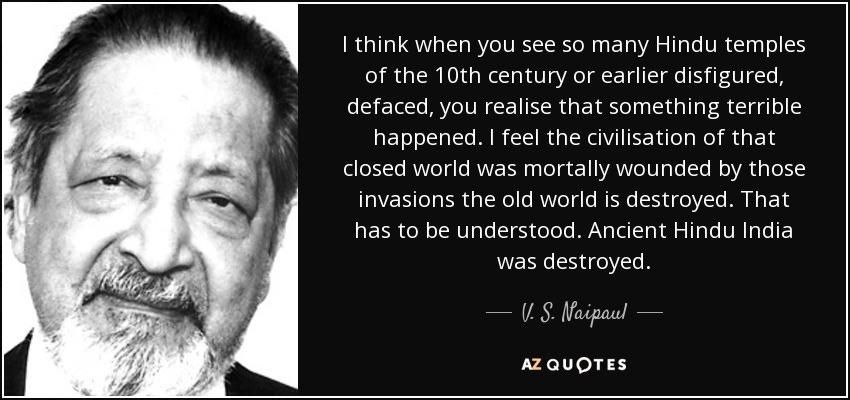
This is exactly what British historian William Darlrymple is doing, he omits any facts about murderous Islamic tyrants and in his latest book has romanticised the truth. He lives in India and sprouts anti Semitic garbage on his Twitter account. A true vile revisionist, some one to criticise and challenge as he is white washing your history. As a British man, it’s farcical and absurd. A true orientalist. A Indian professor has written to this but the site is now down. He refers to the British colonisation of India as a collaboration of sorts, that the east India trading company is “the golden road”. Almost as criminal as Nazi propaganda.
“Dalrymple has his type in India willing to whitewash the atrocities of Islamic invaders in spite of abundant evidence to the contrary.”
https://yourawesomeindia.com/2019/11/26/william-dalrymple-defending-the-indefensible/
Great read , just some things, the Rashidun were the successors to Muhammad technically-not the Umayyads -and they also invaded buddhist lands (the sassanid empire in which zoroastrianism was already a dying religion).
Also, there was a bit of a racial element too in the invasions, the persians called the indians crows (black) and even used indian as a synonym for black , i also remember hindu kush (as in the mountains ) meaning something along the lines of “hindu killer” in persian . Moreover, I don’t remember the name of the author or work specifically but there was some Kashmiri Brahman who wrote about how disgusting the white skin of the Ghurid sultan looked like. The Mughals initially also preferred marrying Kashmiris and not the generally dark skinned indians. Out of the 51 mansabdars with the rank of 5000 during the rule of aurangzeb , turks and iranians made up 62% despite making up less than 1% of the population , only 7% were even indian muslim. It is possible that the white complexion obsession in india was brought over by them if anything- though it’s probably a reach and an unintended consequence since the turks may have just wanted to have kids with people who looked similar to them ig.